- Children's Health

What Is a Lisp?

A lisp is a speech impediment that specifically relates to making the sounds associated with the letters S and Z. Lisps usually develop during childhood and often go away on their own. But some persist and require treatment.
What Causes a Lisp?
There are no known causes of lisps. Some people think that using a pacifier after a certain age may contribute to lisps. They believe prolonged pacifier use can strengthen the muscles of the tongue and lips, making lisps more likely. However, pacifier usage is not a factor in every child with a lisp. Additionally, each child who uses a pacifier doesn't get a lisp.
Other possible causes of lisps include:
- Tongue-tie — a condition where the tongue is tethered to the bottom of the mouth. This restricts its movement. Another name for a tongue-tie is ankyloglossia.
- Problems with jaw alignment.
- Simply having learned to say the sound incorrectly.
When Is Lisping a Concern?
Many young children have some kind of lisp as they learn to talk. It is one of the most common speech impediments. About 23% of speech-language pathologist clients have lisps.
However, you may want to look into professional help if your child is still lisping after the age of 4 1/2. However, children as young as three years old can work on lisping with a speech-language pathologist.
Types of Lisps
There are four types of lisps:
- Frontal lisp. This lisp occurs when you push your tongue too far forward, making a "th" sound when trying to words with S or Z in them.
- Lateral lisp. Extra air slides over your tongue when making S and Z sounds, making it sound like there is excess saliva.
- Palatal lisp. You touch your tongue to the roof of your mouth when making S and Z sounds.
- Dental lisp. This lisp sounds like a frontal lisp. The difference is that instead of pushing the tongue through the teeth, it is pressing against the teeth.
Treatment for Lisps
Speech-language pathologists are specialists who can help children with lisps. They will evaluate what type of lisp your child has and then help them with it over a period of time. It can take anywhere from a few months to a few years to get rid of a lisp. If a child is older when they start working with a speech-language pathologist, it may take a longer time.
Speech pathologists work with people who have lisps to help them recognize what their lisp sounds like and how to position their tongue in the correct place to make the sound. They do this by giving them exercises to do, like saying specific words or phrases with the sounds in them. Once your child has been working on their lisp for a while, your speech pathologist will engage them in conversation to challenge them to remember proper tongue placement.
If your child's lisp is from a tongue-tie, a doctor may recommend a simple in-office procedure called a frenotomy to reduce the tethering. They take a pair of scissors and snip the excess tissue holding the tongue down. If the tongue-tie is more severe, a surgery called a frenuloplasty may be required.
How to Find a Speech-Language Pathologist
Make sure that any speech-language pathologist you take your child to is licensed. In the US, each state has a different licensure process for speech-language therapists. They may also opt to get an additional certification from ASHA — the American Speech-Language-Hearing Association. Those who have this certification show they meet certain qualifications and follow ASHA's code of ethics.
You should also make sure the speech-language therapist is child-friendly. You may be able to find this information on their website or by reading reviews online. In the session, you can also observe the interaction to make sure you are comfortable with how the therapist is treating your child.
After evaluation, the speech-language pathologist should be able to tell which type of lisp your child has. They should also be able to recommend exercises specific to that type of lisp to help your child.
Other Types of Speech Impediments
Lisps are just one type of speech impediment. Other common speech impediments include:
- Lambdacism. Trouble saying the letter L. People with lambdacism often use the R sound as a substitute.
- Rhotacism. Difficulty with saying the letter R correctly.
The three most common speech impediments are sigmatism (lisping), lambdacism, and rhotacism. However, other people can also have trouble pronouncing the sounds associated with the letters K, G, T, D, and E.
Home Remedies to Help Lisps
Whether or not your child sees a speech-language pathologist, there are things you can do at home to help your child's lisp, including:
- Treat allergies and sinus problems that may lead to lisping.
- Curb thumb sucking .
- Have your child drink through a straw to build strength.
- Encourage playtime with things like bubbles or horns.
Top doctors in ,
Find more top doctors on, related links.
- Children's Health News
- Children's Health Reference
- Children's Health Slideshows
- Children's Health Quizzes
- Children's Health Videos
- Find a Pediatrician
- ADHD in Children
- Baby Development
- BMI Calculator for Parents
- Children's Vaccines
- Kids' Dental Care
- Newborn & Baby
- Teen Health
- More Related Topics

Types of Lisps: A Comprehensive Guide

Lisps, a speech impediment characterized by difficulty pronouncing certain sounds, can manifest in various forms, affecting children and adults. Understanding the different types of lisps is crucial to providing appropriate treatment and support for individuals struggling with speech clarity. This article will explore the common types of lisps, their causes, and how they can impact communication. By delving into these specific common speech errors and variations, we can better understand the challenges individuals with lisps face and how we can offer assistance.
Identifying the Four Main Types of Lisps
Lisps are speech impediments that disrupt the normal flow of air and tongue placement during speech, leading to misarticulation of sounds. These impediments are not just about the “s” and “z” sounds of speech delay but can affect various aspects of speech clarity and fluency. Recognizing the specific type of lisp is essential for tailored speech therapy interventions.
Interdental Lisps
Characterized by the tongue protruding between the front teeth during speech errors in the articulation of “s” and “z” sounds, an interdental lisp transforms these sounds into “th” sounds. This misplacement of the tongue directly impacts speech clarity, making it challenging for listeners to discern the intended consonants. The visual aspect of the tongue’s protrusion is also notable, often observed during speech, and can impact the speaker’s self-esteem and social interactions.
Dentalized Lisp
It occurs when the tongue is pressed too closely to the front teeth but does not extend past them, leading to a dampened or softened articulation of “s” and “z” sounds. This tongue position causes the sounds to be less sharp and more muffled, affecting the speaker’s ability to produce more crisp, clear consonants correctly. It’s a subtle deviation from normal speech patterns that can make understanding more difficult for listeners and may contribute to miscommunication.
Lateral Lisp
This most common type of lisp is distinguished by a “slushy” or “wet” sound produced when air escapes laterally, or sideways, from the tongue during the articulation of “s” and “z” sounds. The lateral air dispersion disrupts the normal flow of these sounds, leading to a distorted, unclear speech quality. The lateral lisp is particularly challenging to correct because it involves retraining the tongue’s muscle memory to direct airflow correctly.
Palatal Lisps
It involves incorrect tongue placement against or near the soft palate instead of the alveolar ridge, just behind the upper front teeth, where “s” and “z” sounds are typically formed. This incorrect positioning affects the acoustic properties of speech, resulting in a hollow or nasal quality that deviates significantly from the expected sounds. The palatal lisp can affect not only “s” and “z” sounds but also can alter the resonance of the tongue, raising the entire speech pattern, making it sound unusual and often difficult to understand.
The Interdental Lisp: Causes and Characteristics
The interdental lisp is a common speech impediment characterized by specific speech sounds made by the tongue protruding between the front teeth when articulating the “s” and “z” sounds, resulting in these sounds being perceived as “th.” This misplacement of the tongue directly hampers speech clarity, impacting both the speaker’s ability to communicate effectively and the listener’s ability to understand the speech.
Anatomical Factors
In many cases, the interdental lisp can be attributed to anatomical variances such as an oversized tongue or dental anomalies like missing teeth, which can alter the normal tongue placement and airflow necessary for clear speech production.
Habitual Causes
Persistent habits from childhood, such as thumb sucking or prolonged use of pacifiers, can contribute to the development of an interdental lisp by encouraging the tongue to rest and push forward between the teeth.
Neurological and Developmental Influences
Sometimes, the interdental lisp is linked to neurological or developmental conditions that affect muscle control and coordination, leading to difficulties achieving the correct tongue position for certain sounds.
Impact on Communication
The interdental lisp affects the clarity of speech, which can influence social interactions, confidence levels, and academic or professional opportunities for the individual. It can be particularly challenging in languages with a high prevalence of “s” and “z” sounds, making certain words or phrases more difficult to pronounce correctly.
The Lateral Lisp: Understanding Its Unique Challenges
The lateral lisp stands out among speech impediments due to its distinctive “slushy” or “wet” sound, occurring when air escapes over the sides of the tongue rather than directly through the middle during the articulation of “s” and “z” sounds. This unique airflow distortion affects not only the clarity z sound of these specific sounds but also the overall intelligibility of speech.
- Airflow Misdirection: Central to the lateral lisp is the misdirection of airflow, which should normally flow over the center of the tongue for clear “s” and “z” sounds. In lateral lisps, the sides of the tongue allow air to escape, creating a sound that lacks the precision needed for these consonants.
- Speech Clarity Impact: The lateral lisp’s effect on speech clarity can be significant, with the “slushy” quality of sounds making it difficult for listeners to distinguish between similar words and phrases, potentially leading to misunderstandings in communication.
- Origins and Contributing Factors: Although the precise causes of a lateral lisp can vary, they often involve a combination of physical, developmental, and, sometimes, behavioral factors. Incorrect tongue positioning, neurological conditions affecting muscle control, and learned speech patterns can contribute to developing this lisp.
- Challenges in Correction: Addressing a lateral lisp can be more challenging than other types due to its complex nature and the necessity for individuals to relearn the proper technique for airflow management during speech. Speech therapy plays a crucial role in this process, employing specific strategies and exercises to correct tongue placement and promote the correct airflow pathway.
- Personal and Social Implications: Beyond the technical speech challenges, the lateral lisp can have personal and social implications for individuals, affecting self-esteem, social interactions, and academic or professional opportunities due to potential communication barriers.
The Palatal Lisp Symptoms
The palatal lisp is characterized by improper tongue placement against the hard or soft palate front, leading to distorted speech sounds. This type of lisp is recognized by its hallmark symptoms, affecting the clarity and resonance of speech, particularly for “s” and “z” sounds, which may sound muffled or hollow.
Hollow or Nasal Sound Quality
The most distinguishing symptom of a palatal lisp is the production of “s” and “z” sounds that have a hollow or nasal quality. This occurs because the tongue’s contact with the soft palate changes the normal airflow and resonance patterns during speech.
Misplaced Tongue Placement
Individuals with a palatal lisp often have difficulty positioning their tongue correctly during speech, leading it to touch or press against the soft palate instead of the hard palate. This incorrect placement significantly affects the production of certain sounds.
Challenges with Specific Sounds
The palatal lisp predominantly affects the production of “s” and “z” sounds but can also impact other sounds that require precise tongue placement and airflow control. The altered sounds can compromise speech intelligibility and clarity .
Speech Clarity and Intelligibility Issues
The symptoms of a palatal lisp can make it challenging for listeners to understand the affected individual clearly, potentially impacting communication in both personal and professional settings.
Potential Causes and Contributing Factors
A palatal lisp can result from various factors, including developmental delays, neurological conditions, or learned speech patterns. It is essential to identify these underlying causes to address the lisp effectively.
The Dentalized Lisp: How It Differs from Other Types
The dentalized lisp is a speech disorder characterized by the tongue pressing too closely against the front teeth during the production of “s” and “z” sounds, leading to speech that may sound muffled or unclear. This lisp differs significantly from others due to its specific tongue-teeth interaction and the subtle yet impactful effect on speech clarity.
Tongue Placement: Central to the dentalized lisp is the specific placement of the tongue against the back of the upper front teeth, rather than protruding between them or misdirecting airflow laterally. This positioning creates a dampened version of “s” and “z” sounds.
Speech Clarity Impact: Unlike the interdental lisp, where the tongue protrudes between the teeth, or the lateral lisp, characterized by air escaping over the sides of the tongue, the dentalized lisp’s primary impact is on the sharpness and clarity of speech rather than altering the sound to resemble another, such as “th.”
Identification and Diagnosis: Recognizing a dentalized lisp involves carefully observing tongue movement and listening for the sibilant sounds’ distinctive, somewhat suppressed quality. Speech therapists utilize specific assessments to identify this lisp type and understand its impact on an individual’s speech.
Correction Strategies: Corrective strategies for a dentalized lisp focus on retraining the tongue to maintain a slight gap from the front teeth, ensuring clearer articulation of “s” and “z” sounds. Speech therapy exercises are tailored to encourage proper tongue posture and strengthen the muscles for precise sound production.
Challenges and Considerations: Addressing a dentalized lisp may require a multifaceted approach, especially if it’s part of a broader speech pattern or influenced by anatomical factors. Consistent practice and dental or orthodontic status adjustments can be part of the comprehensive dental treatment plan .
Strategies for Correction and Improvement: Therapy and Exercises
Overcoming lisps involves targeted strategies that blend professional speech therapy with specific exercises designed to correct tongue placement and improve a child’s speech clarity. This multifaceted approach focuses on retraining the muscles and habits responsible for lisping, offering individuals a clear path toward more articulate speech.
- Speech Therapy Sessions: Engaging with a speech-language pathologist is fundamental for individuals with lisps. These professionals assess the type of lisp, identify underlying causes, and develop personalized therapy plans that address specific needs, providing guidance and support throughout the correction process.
- Tongue Positioning Exercises: Exercises aimed at correcting tongue placement are central to therapy. For instance, pushing the tongue against a hard candy placed on the palate can train the tongue to retract from the teeth during speech, which is crucial for correcting interdental and dentalized lisps.
- Breath Control Techniques: Proper airflow is essential for clear speech. Exercises focusing on controlling breath can help manage the airflow more effectively, reducing the chances of lateral lisping by ensuring air flows forward instead of sideways.
- Articulation Practice: The repeated practice of troublesome sounds, often using phonetic placement methods to guide the tongue to the correct position, helps gradually reduce lisping. Mirror exercises can also be beneficial, allowing visual feedback for correct tongue and mouth positioning.
- Strengthening Oral Muscles: Activities designed to strengthen the jaw, tongue, and lip muscles can improve speech clarity. Examples include blowing balloons to enhance breath control and using straws for drinking to promote muscle coordination.
- Consistent Practice: Regular practice of exercises and speech patterns at home reinforces the progress made during therapy sessions. Consistency is key to making lasting changes in speech habits.
- Feedback and Monitoring: Continuous feedback from the speech therapist, self-monitoring, and possibly recording speech for self-assessment can offer valuable insights into progress and areas needing further improvement.
In conclusion, several types of lisps and functional speech disorders can affect individuals of all ages. Identifying the specific type of lisp is important to provide appropriate treatment and support. By understanding the characteristics and causes of different types of lisps, individuals can work towards improving their speech and communication skills. If you or someone you know is struggling with a lisp, don’t hesitate to seek help from a speech therapist or healthcare professional. By addressing the issue early on, individuals can gain confidence and improve their overall quality of life.
Lisps: What They Are and How to Deal With Them – WebMD
https://www.webmd.com/children/what-is-a-lisp
Lisps – Speech and Language UK: Changing young lives
https://speechandlanguage.org.uk/help-for-families/resource-library-for-families/lisps/
Analysis of recursive types in Lisp-like languages | ACM SIGPLAN Lisp Pointers
https://dl.acm.org/doi/abs/10.1145/141478.141544
Common Lisp
https://lisp-lang.org/
LISP | Artificial Intelligence, Machine Learning & Programming | Britannica
https://www.britannica.com/technology/LISP-computer-language
Leave a Reply Cancel reply
Your email address will not be published. Required fields are marked *
Speak with a Specialist Today! 888-855-1309

What’s a Lisp and How Do You Treat It?
- Virtual Speech Therapy LLC
- March 26, 2024
Reviewed by Dr. Joyce Richardson, PhD .
Table of Contents
A lisp is a speech impediment characterized by difficulty pronouncing certain sounds, particularly the “s” and “z” sounds. It’s typically addressed through speech therapy and consistent practice.
A lisp can have a big impact on those affected, especially in social situations or professional settings.
Imagine trying to have a conversation with someone who struggles with their “s” and “z” sounds – it can make things a bit awkward, right?
Fortunately, with the right support and resources, individuals can overcome the challenges associated with a lisp and develop clearer and more confident speech.
We’re here to shed some light on this topic. From the different types of lisps to what causes them and how to treat them. Keep reading to learn more.
What Causes a Lisp?
A lisp can be caused by a variety of factors, including:
- Structural abnormalities
- Muscle coordination issues
- Habitual factors

Sometimes it’s a case of anatomy. Structural abnormalities, such as a cleft palate, tooth misalignment, or a tongue tie can disrupt the normal airflow during speech production, leading to a lisp.
Then there’s muscle coordination. Think of it like trying to pat your head and rub your tummy at the same time – except it’s your tongue trying to hit the right spots to make those “s” and “z” sounds. Sometimes, things just don’t sync up like they’re supposed to which can be due to developmental delays or neurological conditions that affect muscle control.
Habitual factors, like prolonged use of pacifiers or thumb sucking during early childhood, can also affect the development of speech and lead to a lisp. In some cases, a lisp may be a learned behavior from hearing others speak with a lisp or imitating certain speech patterns. Breaking those habits can take some work, but it’s absolutely doable.
Identifying the root cause is the first step to tackling a lisp head-on. Whether it’s anatomy, muscle coordination, habits, or something else entirely, understanding the cause is key to finding the right treatment approach.
Impact of Lisps
Lisps can have a pretty big impact on someone’s life.
Communication Challenges
Having a lisp can make communication tricky and make it hard for individuals to express themselves clearly.
Picture trying to chat about “sunshine” but ending up with “thunthine” instead.
These communication hiccups can lead to misunderstandings and frustration, both for the person with the lisp and the ones they’re talking to.
Social and Emotional Effects
Lisps can also take a toll on confidence if you’re constantly worrying if your words will come out right or if you’ll trip over your tongue mid-sentence.
The embarrassment caused can lead to lower self-esteem and even a reluctance to speak up in public.
And for kids who are just starting to find their voice, this can really complicate things.
Different Types of Lisps

There are four main types of Lisps:
- Lateral Lisp: A lateral lisp occurs when the /s/ and /z/ sounds are produced with air flowing over the sides of the tongue, resulting in a “wet” sound.
- Palatal Lisp: In a palatal lisp, the /s/ and /z/ sounds are pronounced with the tongue in contact with the roof of your mouth, resulting in a “slushy” sound.
- Frontal Lisp: This type of lisp happens when the /s/ and /z/ sounds are pronounced with the tongue too far forward, resulting in more of a “th” sound.
- Dental Lisp: The dental lisp is the most common type of lisp and it involves the tongue coming into contact with the front teeth, resulting in the /s/ and /z/ sounds being pronounced with a “th” sound similar to the frontal lisp.
How to Treat a Lisp
Treating a lisp typically involves a combination of speech therapy with a qualified speech-language pathologist (SLP) and consistent practice.
Your SLP will suggest a treatment plan based on:
- The type of lisp you’re dealing with and,
- What is causing it.
Treatment will often include exercises to improve tongue placement, airflow, and articulation of “s” and “z” sounds.
In some cases, other interventions may be recommended, such as orofacial myofunctional therapy to address underlying muscle coordination issues, behavioral therapy to modify speech patterns and habits, or a frenotomy if a tongue tie is causing the lisp.

When Should My Child With a Lisp Get Treatment?

It depends on what’s causing it.
Depending on what’s causing your child’s lisp, you may want to take action right away, while other times, it might be best to wait and see if things improve on their own.
A frontal lisp is often just a part of young children’s developmental journey. As they grow and learn new sounds, the lisp may naturally improve on its own so a speech-language pathologist might wait until age seven before providing intervention.
A lateral lisp on the other hand is not considered a developmental distortion so treatment can begin earlier, usually around four and a half years of age, to address this type of lisp.
Consulting with a licensed speech therapist is the best way to figure out the best course of action and the timing.
How to Support Your Child With a Lisp
Whether you’re waiting it out, or actively treating the lisp, there are things you want to keep in mind in order to support your child along their journey:
- Create a supportive environment: Avoid any form of mockery or ridicule
- Encourage confidence and self-esteem: Praise their efforts and focus on their strengths, rather than their speech impediment.
- Encourage open communication: Provide a safe space for your child to express themselves without fear of judgment.
- Be mindful of their feelings: Make sure they feel included in conversations and activities and encourage peers and family members to be patient and understanding too.

Working With the Right Speech-Language Pathologist
Finding the right Speech-Language Pathologist (SLP) can make a world of difference in your or your child’s communication abilities.
Look for an SLP licensed and certified by ASHA with experience. Find someone who will customize their therapy to suit the unique requirements of your child with a lisp.
At Virtual Speech Therapy LLC , our seasoned team boasts over 50 years of collective experience, catering to individuals of all ages and diverse communication needs. Plus, we offer the convenience of therapy sessions right from the comfort of your own home.
If you’re ready to take the first step toward improving your communication abilities, reach out today to schedule your initial consultation .

More on Speech Therapy

Setting Pragmatic Language Goals for Speech Therapy

Language Development Activities for Infants & Toddlers

Articulation vs Phonological Disorder: What’s the Difference?
Empower your voice.
Copyright © 2024 Virtual Speech Therapy. All rights reserved
Terms and Conditions | Privacy Policy
Crafted with care by SMB Global Marketing
- Set your location
- Change your location
- to see results near you
- Set Your Location
- Clear Location
- Set my preferred location
- Change my preferred location
- to show options closest to me
- Set Your location
Suggested Searches
- Online Bill Pay
- Weight Control
- Maternity Tours
- Nursing Jobs
Different Types of Lisps and How to Treat Them
.jpg?rev=0037cb00980a4b5ebb00750849d9cde6)
Different Types of Lisps & How to Treat Them
Lisps are common speech problems where a person has trouble pronouncing one or more consonant sounds. You may hear speech therapists and others refer to a lisp as a functional speech disorder (FSD).
People of any age can have a lisp. The condition can affect their personal, social, and professional well-being. Consequently, people often ask their doctor how to get rid of a lisp.
This article provides information about lisp causes, the different types of lisps, and how to fix a lisp.
What Is a Lisp?
A lisp is a speech impediment that affects a person’s ability to make “s” and “z” sounds. It occurs because of various problems with how the tongue moves when the person speaks.
Lisps most often develop in childhood and typically go away without treatment. However, some people have a lisp that persists. Unfortunately, children may tease a classmate with a lisp, and adults may perceive others negatively if they have a speech impediment. As a result, people with lisps sometimes struggle with communication and lack confidence.
What Are the Most Common Types of Lisps?
The most common lisp types are:
- Frontal (or interdental) lisp. This type of lisp occurs when a person’s tongue is too far forward and pushes between the front teeth when pronouncing words containing “s” or “z.” As a result, the sound is more “th” in nature.
- Dentalized lisp. This lisp sounds like a frontal lisp but is caused by the tongue pressing against the front teeth.
- Lateral lisp. A lateral lisp has a hissing sound as if there is excess saliva in the mouth. It’s caused by extra air sliding over the tongue.
- Palatal lisp. This lisp occurs when a person touches their tongue to the roof of their mouth when making “s” and “z” sounds.
Causes of Lisps
Why a particular person develops a lisp is often unknown. Some possible causes include being “tongue-tied” (a condition called ankyloglossia where tissue under the tongue restricts movement) or having a jaw alignment problem. Genetics and their effect on the development of the tongue and mouth structures may also be a factor, as can mild hearing loss. Sometimes, a person learns an incorrect pronunciation of “s” and “z” sounds as a child.
Diagnosing a Lisp
Lisps in children typically resolve without treatment. However, if your child’s speech impediment hasn’t gone away as they approach age five, it’s a good idea to talk with your doctor and consider speech therapy. A speech-language pathologist can determine what type of lisp is present and recommend treatment.
What Is the Best Way to Fix a Lisp?
Speech therapy is highly effective in correcting lisps. The process may take a few months (for younger children) to a few years (for older children with a more established lisp), but it generally produces excellent results.
Treatment for a lisp typically involves:
- Helping the person hear what their lisp sounds like
- Teaching them how to place their tongue to produce sounds correctly
- Having them perform exercises like saying specific words or phrases containing the sounds
- Engaging the person in conversations that challenge them to remember and use proper tongue placement
Learn More About the Treatment of Lisps
Lisps are common speech problems that often resolve on their own but can be persistent. Can you fix a lisp? Yes, lisps can be corrected, typically with assistance from a speech-language pathologist.
If your child has a lisp or you have one, Baptist Health can help. Learn about our speech pathology services .
Learn More.
- Health Wellness
Related Blog Articles

Can Anxiety Cause Abnormal EKG?
.jpg?rev=5229991c6207420aaae668ba0804b3bc)
How to Stop Anxiety Chills
.jpg?rev=ed72459f825148bc85a8cd78cd3cd5fa)
How to Deal with Turbulence Anxiety
Let's Stay in Touch
Sign up to receive Baptist Health emails to learn more about your health from our blog, e-newsletter, and Flourish. Or follow one of our social media accounts.
- 2262 N. First Street San Jose, CA 95131
- (408) 337-2727
What is a lisp and how does a speech therapist help?
by Jennifer Davis | Nov 8, 2021 | Speech , Speech Therapy | 0 comments

If your child has trouble pronouncing his ‘s’ and ‘z’, chances are that they have a lisp. Lisp is a speech impediment that develops during childhood and usually goes away on its own.
What causes a lisp.
Most often a lisp is caused by the wrong tongue placement in the month. When that happens, the airflow to the inside of the mouth is obstructed. This causes the words and syllables to distort. Another reason your child has a lisp is because of tongue ties.
In most cases, lisping is temporary and goes away on its own or with speech therapy.
Types of Lisps
Understanding the type of lisp helps your speech therapist develop the right program.
- Frontal Lisp
The frontal lisp is produced when the tip of the tongue protrudes between the front teeth. This obstructs the airflow which causes the wrong pronunciation of the ‘s’ and ‘z’ sounds. A frontal lisp is the most common form of lisp.
- Palatal Lisp
A palatal lisp is produced when the child rolls their tongue too far back and touches the soft palate or the roof of the mouth.
- Dental Lisp
A dental lisp occurs when the child pushes their tongue against the front teeth.
- Lateral Lisp
A Lateral lisp is produced when the child is not correctly directly the ‘s’ sound out from the airway. Instead of going out in the center of the mouth, the sound is released around the sides of the tongue.
How can a speech therapist help?
Depending on the kind of lisp, your child’s speech therapist will most likely adopt the following techniques to correct it:
Generate Awareness
A lisp looks cute to many parents but can be an impediment as the child grows old. A child might not be able to correct a lisp on his own when he doesn’t realize the difference. Speech therapists will modulate the right and wrong pronunciation to help your child identify and correct the lisp.
Tongue Placement
Most lisps are caused by the incorrect placement of the tongue. Your child’s speech therapist will identify the kind of lisp and then direct your child towards the right tongue placement.
Drink Through a Straw
Drinking from a straw cannot cure a lisp, but it can help generate awareness of the tongue. When your child drinks through a straw, it helps keep the tongue pointed down naturally away from the front teeth and the palette.
Practicing Words and Phrases
Your child’s SLP will identify the words that your child has difficulty pronouncing. He will practice these words with the child. He will help your child practice words with these sounds with the initial (beginning), medial (middle), and final (end) sounds.
Your SLP will also give you words to practice at home with the child. If he doesn’t, ask him to provide a list to practice.
Once your child is able to pronounce individual words properly, the SLP will move towards phrases.
Conversation
After a few rounds of practice sessions with words and phrases, your child’s SLP will move towards proper conversations to see how you are faring when the flow of words and sentences.
At this point, your child should be able to easily converse without any issues.
If your child is having issues with their speech, book a free initial consultation with our speech therapists. Call (408) 337-2727 today to talk to our expert SLPs.
Submit a Comment Cancel reply
Your email address will not be published. Required fields are marked *
Save my name, email, and website in this browser for the next time I comment.
- Communication
- Developmental Delay
- Fine Motor Activities
- Handwriting
- Manipulation
- More Than Words Program
- Occupational Therapy
- Occupational Therapy Ideas
- Pediatric Occupational Therapy
- Pediatric Therapy
- Physical Therapy
- Sensory Processing
- Special Education
- Speech Therapy
- Story Recall
- Uncategorized
- visual perceptual skills
- Whole Body Listening
- Benefits of Sharing Responsibilities When Feeding Kids
- Why Kids May Struggle with Self-Care and What to Do
- Understanding Pediatric Sensory Regulation
- How Physical Therapy can help with Cerebral Palsy
- AAC Awareness
- Type 2 Diabetes
- Heart Disease
- Digestive Health
- Multiple Sclerosis
- Diet & Nutrition
- Health Insurance
- Public Health
- Patient Rights
- Caregivers & Loved Ones
- End of Life Concerns
- Health News
- Thyroid Test Analyzer
- Doctor Discussion Guides
- Hemoglobin A1c Test Analyzer
- Lipid Test Analyzer
- Complete Blood Count (CBC) Analyzer
- What to Buy
- Editorial Process
- Meet Our Medical Expert Board
Overcoming Speech Impediment: Symptoms to Treatment
There are many causes and solutions for impaired speech
- Types and Symptoms
- Speech Therapy
- Building Confidence
Speech impediments are conditions that can cause a variety of symptoms, such as an inability to understand language or speak with a stable sense of tone, speed, or fluidity. There are many different types of speech impediments, and they can begin during childhood or develop during adulthood.
Common causes include physical trauma, neurological disorders, or anxiety. If you or your child is experiencing signs of a speech impediment, you need to know that these conditions can be diagnosed and treated with professional speech therapy.
This article will discuss what you can do if you are concerned about a speech impediment and what you can expect during your diagnostic process and therapy.
FG Trade / Getty Images
Types and Symptoms of Speech Impediment
People can have speech problems due to developmental conditions that begin to show symptoms during early childhood or as a result of conditions that may occur during adulthood.
The main classifications of speech impairment are aphasia (difficulty understanding or producing the correct words or phrases) or dysarthria (difficulty enunciating words).
Often, speech problems can be part of neurological or neurodevelopmental disorders that also cause other symptoms, such as multiple sclerosis (MS) or autism spectrum disorder .
There are several different symptoms of speech impediments, and you may experience one or more.
Can Symptoms Worsen?
Most speech disorders cause persistent symptoms and can temporarily get worse when you are tired, anxious, or sick.
Symptoms of dysarthria can include:
- Slurred speech
- Slow speech
- Choppy speech
- Hesitant speech
- Inability to control the volume of your speech
- Shaking or tremulous speech pattern
- Inability to pronounce certain sounds
Symptoms of aphasia may involve:
- Speech apraxia (difficulty coordinating speech)
- Difficulty understanding the meaning of what other people are saying
- Inability to use the correct words
- Inability to repeat words or phases
- Speech that has an irregular rhythm
You can have one or more of these speech patterns as part of your speech impediment, and their combination and frequency will help determine the type and cause of your speech problem.
Causes of Speech Impediment
The conditions that cause speech impediments can include developmental problems that are present from birth, neurological diseases such as Parkinson’s disease , or sudden neurological events, such as a stroke .
Some people can also experience temporary speech impairment due to anxiety, intoxication, medication side effects, postictal state (the time immediately after a seizure), or a change of consciousness.
Speech Impairment in Children
Children can have speech disorders associated with neurodevelopmental problems, which can interfere with speech development. Some childhood neurological or neurodevelopmental disorders may cause a regression (backsliding) of speech skills.
Common causes of childhood speech impediments include:
- Autism spectrum disorder : A neurodevelopmental disorder that affects social and interactive development
- Cerebral palsy : A congenital (from birth) disorder that affects learning and control of physical movement
- Hearing loss : Can affect the way children hear and imitate speech
- Rett syndrome : A genetic neurodevelopmental condition that causes regression of physical and social skills beginning during the early school-age years.
- Adrenoleukodystrophy : A genetic disorder that causes a decline in motor and cognitive skills beginning during early childhood
- Childhood metabolic disorders : A group of conditions that affects the way children break down nutrients, often resulting in toxic damage to organs
- Brain tumor : A growth that may damage areas of the brain, including those that control speech or language
- Encephalitis : Brain inflammation or infection that may affect the way regions in the brain function
- Hydrocephalus : Excess fluid within the skull, which may develop after brain surgery and can cause brain damage
Do Childhood Speech Disorders Persist?
Speech disorders during childhood can have persistent effects throughout life. Therapy can often help improve speech skills.
Speech Impairment in Adulthood
Adult speech disorders develop due to conditions that damage the speech areas of the brain.
Common causes of adult speech impairment include:
- Head trauma
- Nerve injury
- Throat tumor
- Stroke
- Parkinson’s disease
- Essential tremor
- Brain tumor
- Brain infection
Additionally, people may develop changes in speech with advancing age, even without a specific neurological cause. This can happen due to presbyphonia , which is a change in the volume and control of speech due to declining hormone levels and reduced elasticity and movement of the vocal cords.
Do Speech Disorders Resolve on Their Own?
Children and adults who have persistent speech disorders are unlikely to experience spontaneous improvement without therapy and should seek professional attention.
Steps to Treating Speech Impediment
If you or your child has a speech impediment, your healthcare providers will work to diagnose the type of speech impediment as well as the underlying condition that caused it. Defining the cause and type of speech impediment will help determine your prognosis and treatment plan.
Sometimes the cause is known before symptoms begin, as is the case with trauma or MS. Impaired speech may first be a symptom of a condition, such as a stroke that causes aphasia as the primary symptom.
The diagnosis will include a comprehensive medical history, physical examination, and a thorough evaluation of speech and language. Diagnostic testing is directed by the medical history and clinical evaluation.
Diagnostic testing may include:
- Brain imaging , such as brain computerized tomography (CT) or magnetic residence imaging (MRI), if there’s concern about a disease process in the brain
- Swallowing evaluation if there’s concern about dysfunction of the muscles in the throat
- Electromyography (EMG) and nerve conduction studies (aka nerve conduction velocity, or NCV) if there’s concern about nerve and muscle damage
- Blood tests, which can help in diagnosing inflammatory disorders or infections
Your diagnostic tests will help pinpoint the cause of your speech problem. Your treatment will include specific therapy to help improve your speech, as well as medication or other interventions to treat the underlying disorder.
For example, if you are diagnosed with MS, you would likely receive disease-modifying therapy to help prevent MS progression. And if you are diagnosed with a brain tumor, you may need surgery, chemotherapy, or radiation to treat the tumor.
Therapy to Address Speech Impediment
Therapy for speech impairment is interactive and directed by a specialist who is experienced in treating speech problems . Sometimes, children receive speech therapy as part of a specialized learning program at school.
The duration and frequency of your speech therapy program depend on the underlying cause of your impediment, your improvement, and approval from your health insurance.
If you or your child has a serious speech problem, you may qualify for speech therapy. Working with your therapist can help you build confidence, particularly as you begin to see improvement.
Exercises during speech therapy may include:
- Pronouncing individual sounds, such as la la la or da da da
- Practicing pronunciation of words that you have trouble pronouncing
- Adjusting the rate or volume of your speech
- Mouth exercises
- Practicing language skills by naming objects or repeating what the therapist is saying
These therapies are meant to help achieve more fluent and understandable speech as well as an increased comfort level with speech and language.
Building Confidence With Speech Problems
Some types of speech impairment might not qualify for therapy. If you have speech difficulties due to anxiety or a social phobia or if you don’t have access to therapy, you might benefit from activities that can help you practice your speech.
You might consider one or more of the following for you or your child:
- Joining a local theater group
- Volunteering in a school or community activity that involves interaction with the public
- Signing up for a class that requires a significant amount of class participation
- Joining a support group for people who have problems with speech
Activities that you do on your own to improve your confidence with speaking can be most beneficial when you are in a non-judgmental and safe space.
Many different types of speech problems can affect children and adults. Some of these are congenital (present from birth), while others are acquired due to health conditions, medication side effects, substances, or mood and anxiety disorders. Because there are so many different types of speech problems, seeking a medical diagnosis so you can get the right therapy for your specific disorder is crucial.
Centers for Disease Control and Prevention. Language and speech disorders in children .
Han C, Tang J, Tang B, et al. The effectiveness and safety of noninvasive brain stimulation technology combined with speech training on aphasia after stroke: a systematic review and meta-analysis . Medicine (Baltimore). 2024;103(2):e36880. doi:10.1097/MD.0000000000036880
National Institute on Deafness and Other Communication Disorders. Quick statistics about voice, speech, language .
Mackey J, McCulloch H, Scheiner G, et al. Speech pathologists' perspectives on the use of augmentative and alternative communication devices with people with acquired brain injury and reflections from lived experience . Brain Impair. 2023;24(2):168-184. doi:10.1017/BrImp.2023.9
Allison KM, Doherty KM. Relation of speech-language profile and communication modality to participation of children with cerebral palsy . Am J Speech Lang Pathol . 2024:1-11. doi:10.1044/2023_AJSLP-23-00267
Saccente-Kennedy B, Gillies F, Desjardins M, et al. A systematic review of speech-language pathology interventions for presbyphonia using the rehabilitation treatment specification system . J Voice. 2024:S0892-1997(23)00396-X. doi:10.1016/j.jvoice.2023.12.010
By Heidi Moawad, MD Dr. Moawad is a neurologist and expert in brain health. She regularly writes and edits health content for medical books and publications.

What is Lisping?
Lisping is a common speech impediment that often appears in young children. A lisp makes producing certain letter sounds correctly difficult, due to improper tongue positioning when speaking. A lisp is often related to an orofacial myofunctional disorder. An orofacial myofunctional disorder is defined as improper patterns and behaviors in the function of muscles and poor habits that involve the tongue, lips, jaw, and face. The most common type of orofacial myofunctional disorder is referred to as “ tongue thrust ”, which typically involves an improper resting position of the tongue and lips when speaking and at rest, as well an incorrect swallowing pattern.
In the majority of cases, a lisp affects the individual’s ability to produce specific letter sounds, mostly s/z and sh/ch/j sounds. Lisping is relatively common in younger children who have not yet developed more mature patterns of articulation. While most children will outgrow a lisp as their speech and articulation skills progress, sometimes a lisp will persist into adulthood. Speech therapy is the best resource when it comes to eliminating a lisp, whether in an adult or a child. Don’t wait to seek help with lisping, get started with Great Speech by scheduling your free introductory call today!
What are the Different Types of Lisps?
There are four primary types of lisps:
Frontal Lisp – This type of lisp occurs when the tongue is pushed too far forward, resulting in a “th” sound when attempting to say words with an S or Z sound in them.
Lateral Lisp – A lateral lisp refers to when excess air moves over the tongue when producing S and Z sounds, which often makes it sound like there is extra saliva in the mouth.
Palatal Lisp – This type of lisp occurs when the tongue is touching the roof of the mouth when producing S and Z sounds.
Dental lisp – This type of lisp sounds similar to a frontal lisp. The difference between these two types of lisps is that instead of the tongue pushing through the teeth, in the case of a dental lisp, the tongue is pressing up against the front teeth.
What Causes Lisping?
At this point in time, there are no known causes of lisps. There are some theories that the use of a pacifier or thumb-sucking beyond a certain age contributes to the development of a lisp. While it is true that sucking a pacifier strengthens the tongue and lip muscles which could make a lisp more likely, it is also true that pacifier use or thumb sucking is not a factor in every lisp, and in turn, not every child who has these habits develops a lisp.
Some other possible causes of lisps are:
Tongue-Tie – A tongue-tie is a condition in which the tongue is overly tethered to the bottom of the mouth which restricts its movement. Tongue tie is also referred to as ankyloglossia.
Problems with Jaw Alignment – Sometimes a lisp is the result of improper jaw alignment.
Learned Improper Habits – In some cases a lisp is the result of simply learning to produce the sounds improperly in the first place. The more these sounds are produced incorrectly, the more the tongue placement during the production of these sounds becomes ingrained in the individual and their muscle memory.
Is Lisping a Disorder?
A lisp is classified as a functional speech disorder or an articulation disorder . Individuals with articulation disorders commonly have difficulty with the motor functions that are required to produce specific speech sounds. They find coordinating their lips, tongue, teeth, palate (roof of their mouth), and lungs to produce certain sounds exceptionally difficult. Some people with a functional speech disorder may produce distorted speech sounds or avoid or switch out sounds that are difficult for them to correctly produce. Getting help as soon as possible offers the best outcomes when working to eliminate a lisp. Get started with Great Speech by scheduling your free introductory call today!
How Can Speech Therapy Help with Lisping?
Speech-language pathologists are specialists when it comes to helping children and adults overcome lisping. They will start by evaluating the individual and identifying what type of lisp they are affected by. Completely eliminating a lisp can take anywhere from several months, to a year or longer.
Speech therapy to improve a lisp commonly involves a gradual progression of ability development, focusing initially on correctly producing the challenging sounds independently (S and Z for example.) Over time, the speech and language pathologist will help the individual to work on properly executing these sounds within speech sounds, words, and word combinations.
Speech Therapy for the remediation of a lisp aims to bring awareness to the various difficulties and areas in need of support. Speech therapy also works to bring mindfulness to the individual’s speech goals and focus on positive results.
Speech therapy for a lisp is often referred to as Articulation Therapy. Some specific approaches in customized therapy can include the use of verbal, visual, or tactile cues. Verbal cues involve the use of verbal instructions and demonstrating how to properly and effectively position the tongue and lips to articulate the challenging sound. Visual clues involve the speech therapist modeling how the mouth, lips, and jaw should look when producing the sound, as well as the use of gestures to express a particular sound. Tactile cues refer to the approach in which the therapist demonstrates the positioning and placement of the tongue and lips using touch. In some cases, other techniques can be included in speech therapy for a lisp such as muscle strengthening exercises, as well as a more general approach to annunciation coaching and support.
If you or your loved one is struggling to communicate effectively because of a lisp, getting connected with a speech and language pathologist can be an incredibly helpful and effective first step. Get started with speech therapy and improve your speech clarity by scheduling your free introductory call today!
Types of lisps, what lisps sound like, and how they're treated

As young children develop their speech and language skills, imperfections should be expected. Errors are often a part of typical development, and they're extremely common.
Lisps are one of the most noticeable speech disorders that can happen during this period of development. People with a lisp often struggle to pronounce certain consonants, with the “s” and “z” sounds being some of the most common and challenging.
In many cases, lisps are just temporary bumps in the road on the path to language development, and over time they’re corrected naturally on their own. However, while a lisp might seem “cute” or “adorable” during a child’s toddler years, it can be concerning if the lisp persists as they get older. The number one question parents typically ask is “Will my child grow out of a lisp?” Many caregivers worry that their child’s lisp will continue into school-age and eventually adulthood, affecting their child’s confidence and self-esteem.
Fortunately, there are effective treatments available. Plus, there are many ways caregivers can reinforce good communication habits at home to prevent a lisp from becoming more pronounced.
As with all speech and language challenges, educating yourself is the best way to make informed treatment decisions. For that reason, we’ve put together this informational guide to answer common questions about lisps, identify signs and symptoms, and explain how a lisp is typically evaluated, diagnosed, and treated.
1 What is a lisp?
2 What causes lisps?
3 Is there a difference between a tongue thrust and a lisp?
4 How can a lisp affect a person's life?
5 How are lisps recognized and diagnosed?
6 How are lisps treated?
7 How do lisps affect adults?
8 How does Expressable assess and treat lisps?
9 How can parents help their child overcome a lisp?
What is a lisp?
Many of us know what a lisp sounds like. The most common form occurs when someone makes a “th” sound when trying to say an “s” or “z” sound. Lisps are caused because of the incorrect placement of a person’s tongue inside their mouth during speech. When a person lisps, their tongue usually touches, pushes against, or protrudes between their teeth.
There are actually four distinct types of lisps, with certain characteristics and tongue placement. While the differences may seem small, correct diagnosis is important when considering treatment. Here are the four types of lisps:
Palatal lisp: As the name suggests, this lisp is associated with a person’s soft palate, more commonly referred to as the roof of the mouth. When a person’s tongue rolls back and touches the roof of their mouth during speech, they often have difficulty making “s” and “z” sounds.
Lateral lisp: This happens when a person’s tongue remains in a close-to-normal position, but airflow manages to escape from one or both sides of their mouth. This is sometimes referred to as a “slushy lisp” because it can make the speaker’s words sound “wet” or “spitty.” What you’re hearing is a mix of air and saliva.
Dentalized lisp: With a dentalized lisp, a person’s tongue pushes against their front teeth, directing airflow forward. This commonly produces a “muffled” sound.
Interdental lisp: These are commonly referred to as frontal lisps. They happen when the tongue pushes forward or protrudes between the front teeth.
Lisps often become noticeable after the age of 2, when children begin developing their language abilities.
Both dentalized and interdental lisps are common and perfectly normal during a child's language development phase. Many children experience them until around 4½ years of age. While it’s always a good idea to talk with a qualified speech-language pathologist if you suspect your child has a lisp (more on that below), it’s especially important once your child is approaching age 5.
Conversely, lateral and palatal lisps do not happen as part of a child’s natural development. A child with this type of lisp should receive a professional evaluation from a speech-language pathologist as soon as possible.
What causes lisps?
Lisps are caused by the incorrect placement of the tongue in the mouth. This can, in turn, obstruct air flow when speaking, and cause the distortion of how a person pronounces words and syllables. Lisps can be caused by a variety of factors, including:
Learning to pronounce sounds and syllables incorrectly
Problems with a person’s jaw alignment
A tongue tie, which occurs when the tongue is attached to the bottom of the mouth and its movement is limited
A tongue thrust , where the tongue protrudes between a person’s teeth
Is there a difference between a tongue thrust and lisp?
Yes, there is a difference between a tongue thrust and lisp. However, the distinction can be hard to identify with an untrained eye and is best left to the clinical assessment of a speech-language pathologist, also known as a speech therapist.
A tongue thrust is technically referred to as an orofacial myofunctional disorder (OMD). It occurs when the tongue moves forward in a pronounced way when a person is either speaking or swallowing. The tongue may sit too far forward in the mouth, or push between a person’s teeth during speech and swallowing. Articulation errors can result from both tongue thrusts and lisps, affecting how the person produces sounds.
A person’s lisp can be a result of a tongue thrust. This is especially important to know because a tongue thrust can eventually cause significant dental issues if left untreated.
How can a lisp affect a person’s life?
Lisping often doesn’t have a severe impact on a person’s ability to be understood. However, a lisp can still have effects on a person’s social and emotional wellbeing.
Some caregivers fear their child could be teased by their peers. Children may also feel anxious or uncomfortable when speaking with other people, which can affect their confidence, self-esteem, and ability to socialize with others.
For adults, these effects can be worse. They may feel frustration or embarrassment in the workplace, and try to avoid certain social situations altogether.
While lisps affect everyone differently, there are things that caregivers and adults can do to minimize the impact of lisps and regain normal speech.
How are lisps recognized and diagnosed?
In most cases, your pediatrician, school nurse, or teacher may refer you to a speech therapist. Speech therapists are communication experts and are the most qualified professionals to assess, evaluate, and treat children and adults with lisps.
As mentioned, there are different types of lisps of varying severities that can impact your child’s speech. That’s why if you suspect your child has a lisp, it’s a good idea to be proactive and seek an evaluation from a speech therapist. To assess your child’s speech patterns, your speech therapist may:
Review your child’s medical history
Examine the anatomy of their mouth and tongue placement
Check for issues like a tongue tie or tongue thrust
Observe your child’s speech fluency, their vocal quality, and their social communication skills
Determine whether your child has a lisp or a different type of speech sound disorder
Provide a professional opinion of when to start intervention; for example, the speech therapist may recommend delaying treatment and closely monitoring your child to see if the lisp naturally disappears over time
How are lisps treated?
Habits become harder to break over time. Therefore, the earlier treatment is provided, the more quickly a lisp can be corrected and your child’s overall communication will improve.
Once your speech therapist assesses your child’s speech, identifies the type of lisp they have, and recognizes which sounds they’re mispronouncing, they’ll develop a tailored treatment plan to help your child reach their communication goals. This plan will often include helping your child:
Increase their awareness of where they’re placing their tongue when speaking
Hear and recognize the difference between correct and incorrect pronunciation of sounds and syllables
Correctly make the target sounds they’re struggling to pronounce
Correctly pronounce more complex language, such as consonant and vowel combinations, structured and spontaneous sentences, and more
Practice using these correct pronunciations in real-life settings outside of therapy sessions
Every child is different, and the frequency and intensity of treatment will shift depending on their needs. While some children can see considerable improvement in a month or two, others will need intervention for a year or more. Factors that can affect the length of treatment include your child’s age, type of lisp, awareness of mispronunciations and ability to self-correct, how well they follow directions, and how often they practice at home.
How do lisps affect adults?
First things first: It’s never too late to correct a lisp.
Many adults have a lisp that was never properly treated in their younger years. They may have feelings of frustration, embarrassment, or low self-esteem, and want to improve their communication to feel more confident when speaking in their daily lives and workplace.
However, it’s also important to note that not all adults want to "fix" or get rid of their lisp--and that’s perfectly OK! Often, these adults have accepted their speech the way it is. It's become part of their unique image and persona.
Assessing and treating lisps is largely similar in both children and adults, beginning with seeking professional help from a speech therapist. The only added challenge with adults is finding someone you can practice with on your own time. Whether this is a spouse, family member, or friend, it’s important to have someone you trust provide honest feedback and encouragement so you can continue to improve on your own time, outside of therapy sessions.
How does Expressable assess and treat lisps?
Expressable matches families with a certified speech therapist trained to evaluate and treat speech impediments like lisps. All therapy is delivered online via face-to-face video conferencing.
The client’s age and development will influence how the speech therapist interacts with them through these video sessions:
Ages 0-3: Caregivers attend sessions and work directly with their child's speech therapist to learn cues and at-home strategies. This way they can confidently practice with their child outside the sessions and help improve their child's communication.
Ages 3-6: Caregivers attend video sessions alongside their child so they both learn valuable skills from their speech therapist. Reinforcing these lessons outside the session will continue to promote at-home skill building.
Ages 7 and up: Most children attend video sessions independently, but parents are kept in the loop with updates and tips during each session.
Adults: Adults attend sessions by themselves, but they are welcome to bring loved ones or family members as well.
Your Expressable speech therapist will introduce a variety of techniques to improve a lisp. Different types of cues and techniques will work for different people.
As the client learns to make the target sounds and becomes more independent in their sound productions, the speech therapist will decrease the amount of help provided. This increases the client’s independence in their speech sound productions, which is the whole goal of speech therapy.
As your independence grows, your speech therapist will also increase the complexity of tasks you’re working on. For example, at the beginning of therapy you may work on the /s/ sound by itself, not in words. Over time, you will likely move on to practicing /s/ in sentences and conversation.
Your speech therapist will work closely with you every step of the way. In addition, all Expressable clients have access to our client portal , which features educational Learning Paths covering the strategies taught in therapy sessions. You can access examples, tips, demo videos, quizzes, and more. Plus, through the portal, you'll receive weekly home practice activities tailored to your needs. The more you practice speech therapy techniques at home, between sessions, the faster you'll make progress!
How can parents help their child overcome a lisp?
As with all speech impediments, having your child practice once or twice a week with a speech therapist simply isn’t enough. Overcoming old habits takes constant reinforcement outside of these sessions. When caregivers are actively involved in their child’s speech development, and they reinforce at home what their child is learning in speech therapy, children make more progress.
While your speech therapist will provide personalized recommendations for at-home practice, here are a few tips and techniques you can start using immediately to help prevent a lisp from becoming more pronounced.
Model correct speech: Children are sponges. They pick up speech habits by watching and interacting with people they love--namely, their family. So it’s important to “model” correct speech every day when speaking with your child. Make sure that you speak slowly, clearly, and with correct pronunciation. In addition, maintain eye contact with your child, even if you have to kneel down to get on their level, so they can see how your mouth moves and how you form sounds.
Use a mirror: Position your child in front of a mirror so each of you can practice pronouncing the “s” and “z” sounds. Watch how your teeth and mouth move when properly pronouncing these sounds, and encourage your child to imitate these correct mouth movements. This is helpful for all children, but in particular for those who are more visual learners.
Try the butterfly technique: This is a common technique used in speech therapy that can be easily practiced at home. To do this, prolong the letter “i” when you say words like “chin” or “win.” Take notice of how the sides of your tongue slightly raise upward like a butterfly’s wings. When pronouncing the “s” and “z” sounds, our tongue should ideally be in the same position. The goal of this exercise is to help prevent the tip of your child’s tongue from protruding past their teeth.
Drink from a straw: For children with dentalized and interdental lisps in particular, it can be especially helpful to use a straw when drinking. Straws naturally force the tongue to pull back into our mouths, which can help increase oral-motor strength. If you’re not a big fan of wasting so much plastic, spend a few dollars on a reusable, eco-friendly metal straw that can be easily washed.
Try to stop thumb-sucking: While thumb-sucking is a natural instinct, it can actually lead to lisping or make it worse. This is because thumb-sucking can cause the teeth to shift and create space for the tongue to protrude forward. Instead, try to find a comforting replacement that your child loves, such as a toy or blanket.
Watch learning jump (leap! spring! hop!) from your sessions into the real world.

Learn more about All topics

Home » Health Conditions » Lisp
Last Updated December 20th, 2021

What are the main causes of lisp?
Can lisp be cured, is lisp a disability, what are the causes of lisp in adults.
Among humans, speech and spoken language are the powerful and effective tools of communication. The acquisition of speech is a highly complex process that we begin in infancy and continue to master throughout our lives. Some individuals take longer than others to develop speech skills. Certain others may be completely unable to speak as a result of muteness. There also exists a group of individuals who are able to communicate through speech but they may have certain defects or impediments.
What Is A ‘Speech Impediment’?

What Is A Lisp?
A lisp is an example of a functional speech disorder . It is a condition in which the person is unable to produce certain sounds necessary for speech. Hence, those who lisp are unable to achieve clear and correct articulation. Often, this involves difficulty in correctly pronouncing the sounds ‘s’, ‘z’ and ‘r’, among others. The most common form of lisp involves distorted pronunciation of sibilant sounds.
Why Do Some People Lisp?
Generally, a lisp is caused by the inability to achieve correct placement of the tongue within the mouth when attempting to produce certain sounds. The specifics are discussed further on in the section dealing with different types of lisps.
The true cause for lisping is not as yet clear. Yet, there may also be certain other factors that contribute to the lisp. For instance:
- Tongue thrust is a common muscular imbalance that most of us display in infancy. If this persists as one grows older, it tends to give rise to lisping speech. Thumb sucking and use of pacifiers can encourage tongue thrust.
- Having an underbite or an overbite can also be responsible for lisping.
- A birth defect known as tongue-tie, which impairs the mobility of the tongue can also give rise to a lisp.
- Having frequent upper respiratory illnesses in early childhood encourage breathing through the mouth and this can affect the normal development of speech.
- Emotional or psychological stress.
Are There Different Kinds of Lisps?
Yes, there are a few different varieties of lisps. These are differentiated as follows:
- Interdental lisp: A person with an interdental lisp will pronounce the sound ‘s’ and ‘z’ incorrectly as ‘th’. Hence, the word ‘lisp’ itself will be pronounced as ‘lithp’. This is normal for children up until the age of 4-4.5. This happens because the tongue pushes forward between the front teeth, causing air to flow forward. Hence, this is also called a frontal lisp.
- Dental lisp: Here, too, air gets pushed forwards when speaking. In this case, the tongue rests against the front teeth when articulating sibilants. As a result, the sound is somewhat muted as compared to an interdental lisp.
- Lateral lisp: This is called so because air is pushed out through the sides of the mouth. The resultant sound is often described as ‘wet’, making it seem as if the person’s mouth is full of saliva when speaking.
- Palatal lisp: Here, the speaker attempts to articulate a sibilant but it becomes distorted because the middle of the tongue is in contact with the soft palate.
How Can The Specific Type Be Identified?
Visiting a doctor can help to make a preliminary assessment. The child will be examined for any structural abnormalities in the mouth. In order to determine the nature of the lisp and the most suitable mode of treatment, it is recommended to seek the opinion of a specialist such as a speech and a language therapist.
Can A Lisp Be Improved Or Corrected?

- Treat cold, sinus, and allergies so that the child doesn’t have to breathe through the mouth.
- Reduce thumb-sucking as much as possible.
- Let the child drink fluids through straws.
Can A Lisp Give Rise To Additional Problems?
Most people who lisp can still be understood well by others. Their speech impediment does not cause any significant problems in their day to day lives. Yet, a person who speaks with a lisp can sometimes become the target of ridicule and humiliation. This can cause them to feel embarrassed, self-conscious or anxious in situations involving public speaking. This can give rise to a severe phobia or even depression.
- https://medlineplus.gov/speechandcommunicationdisorders.html
- https://www.nidcd.nih.gov/health/statistics/statistics-voice-speech-and-language
- http://www.health.gov.au/internet/main/publishing.nsf/Content/what-are-speech-and-language-disorders
- https://www.sa.gov.au/topics/education-and-learning/disability-and-special-needs/speech-and-language-impairments
- https://www.gov.uk/government/publications/the-perspectives-of-children-and-young-people-who-have-speech-language-and-communication-needs-and-their-parents
Dos and Don'ts
- Get the condition corrected with the help of a licensed speech therapist.
- If the child suffers from any developmental problem or cleft palate, see that lisping is treated as soon as possible.
- Let the child feel that he/she is dumb or stupid for not being able to talk properly.
- Force the child to get better fast with speech therapy. Every individual has a different speed of showing improvements.
- Ignore the symptoms of communication disorders especially if an individual has experienced emotional/mental trauma.
banner_af_head
https://factdr.com/wp-content/uploads/2019/05/Deficiency-and-developmental-disorders.png

Help Others Be Fit
Related conditions.

Trending Topics

- Partnership Opportunities
- Privacy Policy
- Cookies Policy
- Affiliate Disclosure

Want to live a healthy lifestyle?
Subscribe to free FactDr newsletters.
REVAMP YOUR
If you're enjoying our website, we promise you'll absolutely love our new posts. Be the first one to get a copy!
Get factually correct, actionable tips delivered straight to your inbox once a week.
We hate spam too. We will never share your email address with anyone. If you change your mind later, you can unsubscribe with just one click

By clicking Subscribe, I agree to the FactDr Terms & Conditions & Privacy Policy and understand that I may opt out of FactDr subscriptions at any time.
Was this article helpful?
What went wrong.
This article contains incorrect information
This article does not have the information I am looking for.
How can we improve it?
FactDr does not provide medical opinion, advice, diagnosis or treatment. Please consult a medical professional. Your privacy is important to us.
We appreciate your helpul feedback!
Lets be friends. Join our Facebook community and connect with like-minded folks.
Happy to know you loved our article!
Did it give you information that you used / can use in your life?
Did it give you information that you found useful to read?

Worried about your health? Don't worry. Just consult a doctor now to get quick answers to your questions.
Worried about your symptoms are you anxious to know if you might have a health condition, don't worry, connect with one of our doctors now and ask them any questions you may have.

What Causes Lisping?

In this article
A lisp is a speech disorder that affects how someone pronounces certain sounds.
Lisps commonly develop during childhood. Nearly 1 in 12 children between the ages of 3 and 17 had a disorder related to voice, speech, or swallowing in 2012. 1
Speech disorders, including lisps, are most prevalent in children between the ages of 3 and 6, at 11%. 2 Many children grow out of their lisps, though some may persist for years, even into adulthood.
Persistent lisps may require treatment from a speech-language pathologist, also known as a speech therapist. A speech therapist can identify the cause and type of your child’s lisp and treat it.
Lisping is a functional speech impediment, meaning it doesn’t have an identified origin. However, there are some possible causes of lisping, including:
- Learning how to say certain sounds incorrectly
- Jaw alignment issues
- Tongue tie or ankyloglossia, when the tongue is tethered to the bottom of the mouth, causing limited mobility
- Pacifier use or thumbsucking

Speech professionals debate the actual cause of lisping, but it’s possible to treat a lisp if your child doesn’t grow out of it.
What are the Different Types of Lisps?
Speech-language pathologists categorize lisps into four different types:
- Frontal lisp – someone with a frontal lisp pushes their tongue too far forward, causing a mispronunciation of S or Z as a “th” sound. Frontal lisps are the most common type.
- Lateral lisp – in a lateral lisp, extra air slips over the sides of the tongue, making S and Z sound “wet”. It may sound like someone with a lateral lisp has excess saliva in their mouth.
- Palatal lisp – palatal lisps involve touching the tongue to the roof of the mouth, especially during S, Z, and sometimes R sounds.
- Dental lisp – dental and frontal lisps sound very similar. However, in a dental lisp, an individual pushes their tongue against their teeth instead of past them.
A speech therapist will identify which type of lisp your child has. Knowing the type will help them create a treatment plan to correct it.
Symptoms of a Lisp
Lisp symptoms are almost always what you hear in your child’s speech. The most common indicators of a lisp include:
- Pronouncing S and Z sounds as “th” (frontal or dental)
- A wet, slushy sound accompanying S and Z (lateral)
- An H sound preceding S and Z (palatal)
Lisps don’t typically cause any symptoms unrelated to speech. However, children with lisps may also have:
- Structural irregularities in the tongue and palate
- Jaw issues such as an excessive overbite
- Abnormalities in the teeth, like an excessive overjet
- Hearing difficulties
- Delayed development
- Recent stress or trauma
- Prolonged respiratory illnesses
While these are not necessarily causes of a lisp, you may see them in conjunction with a lisp.
When to Worry About a Lisp
Most children outgrow their lisps after their toddler years. If your child’s lisp persists past age 5, consult a speech-language pathologist. 3
A speech therapist will evaluate your child’s lisp and determine its type. They’ll then formulate a treatment plan designed to correct the lisp. If they find that something structural is causing the lisp, such as a dental issue, they may refer you to another specialist.
When to See a Speech-Language Pathologist
Most children outgrow a lisp and confidently say all speech sounds by age 5. If they have a lisp past that age, you may wish to see a speech-language pathologist, especially if the lisp causes discomfort or self-esteem issues.
Finding a speech therapist in your area is easy. Many public schools employ speech-language pathologists that can see your children as part of their school day. You can ask your doctor for a referral, check local rehabilitation centers, or contact therapy clinics.
The American Speech-Language and Hearing Association (ASHA) also has an excellent search tool for finding a speech therapist near you.
5 Ways to Correct a Lisp
Research shows that speech-language interventions are highly effective. One study found that an average of just 6 hours of speech therapy over 6 months can produce a significant improvement. 4
Some of the techniques that speech-language pathologists use to correct a lisp are:
1. Developing awareness
The first step in correcting a lisp is to teach your child to recognize the difference between how they pronounce words versus how others do. They may need help to hear their lisp on their own.
A speech therapist will demonstrate both speaking methods and have your child differentiate between them. You can practice this exercise at home with your child, too.
2. Learning tongue placement
Once your child can hear their lisp, their speech therapist will teach them how to form proper pronunciations. They will educate you and your child on correctly placing their tongue.
Demonstrating and practicing tongue placement is an exercise you can do at home.
3. Practicing words
Now that your child knows how and where to place their tongue, the speech therapist will have them practice words that trigger their lisp.
For example, if S is a problem sound, they will have them practice words that contain the same sound. They might start with words that begin with S, then move on to words with S in the middle or at the end.
4. Working on phrases
After your child has mastered words, they’ll move on to short phrases. These phrases will contain more difficult words.
A speech therapist may linger on this step until your child has fully mastered the phrases and words that give them trouble.
5. Having conversations
Lastly, your child and their speech therapist will practice having entire conversations together. A conversation will combine everything they’ve worked on together during treatment.
At this point, your child should be able to say difficult words without lisping. If you want to practice this at home, you can have your child:
- Tell you a story about their day
- Teach you how to do something
- Identify pictures or objects around the house
Other Treatments for Lisping
You may hear about other treatments for a lisp, such as having your child drink through a straw. However, using objects such as straws for speech therapy is controversial, as there’s limited evidence of its effectiveness. 5
How to Cope With a Lisp
Lisping can have an impact on your child’s confidence and self-esteem. Other children may tease them for their lisp, which could interfere with their school and social life.
It can also be frustrating to deal with a lisp as an adult. Research shows that a lisp impacts how people view your speaking ability, intelligence, and employability. 6
Here are a few tips on how to cope with a lisp for adults and children:
- Seek treatment — speech therapy can build your confidence and correct your lisp.
- Get support — seek psychotherapy for you or your child if you need help navigating social situations.
- Set boundaries — ask friends and family not to make fun of any type of speech impediment, developmental issue, or disability.
Can Lisping Cause Other Problems?
While lisping may lead to some peer bullying, it generally does not cause any physical issues. Your child’s health is not necessarily at risk simply because they have a lisp.
However, lisps can indicate an underlying issue, such as a tongue tie. It’s always wise to get your child’s lisp evaluated.
A lisp is a type of speech impediment affecting the pronunciation of certain sounds. It commonly impacts how someone pronounces S, Z, or R.
Lisping has no specific cause, though some factors may influence its development, including how we learn sounds, jaw alignment, pacifier use, and tongue tie. While most children outgrow their lisp after their toddler years, some may continue lisping as they age.
Consult a speech-language pathologist if your child hasn’t lost their lisp by age 5. A speech therapist uses many methods to correct a lisp, including teaching correct tongue placement and practicing difficult words.
Share this article
Related pages.

What Are the Causes and Treatments for Scalloped Tongue?
by Aaron Clarius

Why Does the Tip of My Tongue Hurt?

Posterior Tongue Tie - Symptoms, Risks & Treatments
Medically Reviewed by Khushbu Gopalakrishnan

Why Is My Tongue Swollen?

Why is My Tongue Green and How Can it Be Cured?
by Caroline Bonin

Black Tongue: Why Is My Tongue Black?
- Black, L., et al. “ Communication Disorders and Use of Intervention Services Among Children Aged 3–17 Years: United States, 2012 .” NCHS Data Brief, Centers for Disease Control and Prevention, 2015.
- “ Quick Statistics About Voice, Speech, Language .” National Institute on Deafness and Other Communication Disorders, U.S. Department of Health and Human Services, 2016.
- “ Four to Five Years .” American Speech-Language-Hearing Association, 2022.
- Broomfield, J., et al. “ Is speech and language therapy effective for children with primary speech and language impairment? Report of a randomized control trial. ” International Journal of Language and Communication Disorders, National Library of Medicine, 2011.
- Ruscello, D. “ Nonspeech oral motor treatment issues related to children with developmental speech sound disorders .” Language, Speech, and Hearing Services in Schools, National Library of Medicine, 2008.
- Allard, E., et al. “ Listeners’ perceptions of speech and language disorders. ” Journal of Communication Disorders, Elsevier, Inc., 2008.

- Bipolar Disorder
- Therapy Center
- When To See a Therapist
- Types of Therapy
- Best Online Therapy
- Best Couples Therapy
- Managing Stress
- Sleep and Dreaming
- Understanding Emotions
- Self-Improvement
- Healthy Relationships
- Student Resources
- Personality Types
- Sweepstakes
- Guided Meditations
- Verywell Mind Insights
- 2024 Verywell Mind 25
- Mental Health in the Classroom
- Editorial Process
- Meet Our Review Board
- Crisis Support
Types of Speech Impediments
Phynart Studio / Getty Images
Articulation Errors
Ankyloglossia, treating speech disorders.
A speech impediment, also known as a speech disorder , is a condition that can affect a person’s ability to form sounds and words, making their speech difficult to understand.
Speech disorders generally become evident in early childhood, as children start speaking and learning language. While many children initially have trouble with certain sounds and words, most are able to speak easily by the time they are five years old. However, some speech disorders persist. Approximately 5% of children aged three to 17 in the United States experience speech disorders.
There are many different types of speech impediments, including:
- Articulation errors
This article explores the causes, symptoms, and treatment of the different types of speech disorders.
Speech impediments that break the flow of speech are known as disfluencies. Stuttering is the most common form of disfluency, however there are other types as well.
Symptoms and Characteristics of Disfluencies
These are some of the characteristics of disfluencies:
- Repeating certain phrases, words, or sounds after the age of 4 (For example: “O…orange,” “I like…like orange juice,” “I want…I want orange juice”)
- Adding in extra sounds or words into sentences (For example: “We…uh…went to buy…um…orange juice”)
- Elongating words (For example: Saying “orange joooose” instead of "orange juice")
- Replacing words (For example: “What…Where is the orange juice?”)
- Hesitating while speaking (For example: A long pause while thinking)
- Pausing mid-speech (For example: Stopping abruptly mid-speech, due to lack of airflow, causing no sounds to come out, leading to a tense pause)
In addition, someone with disfluencies may also experience the following symptoms while speaking:
- Vocal tension and strain
- Head jerking
- Eye blinking
- Lip trembling
Causes of Disfluencies
People with disfluencies tend to have neurological differences in areas of the brain that control language processing and coordinate speech, which may be caused by:
- Genetic factors
- Trauma or infection to the brain
- Environmental stressors that cause anxiety or emotional distress
- Neurodevelopmental conditions like attention-deficit hyperactivity disorder (ADHD)
Articulation disorders occur when a person has trouble placing their tongue in the correct position to form certain speech sounds. Lisping is the most common type of articulation disorder.
Symptoms and Characteristics of Articulation Errors
These are some of the characteristics of articulation disorders:
- Substituting one sound for another . People typically have trouble with ‘r’ and ‘l’ sounds. (For example: Being unable to say “rabbit” and saying “wabbit” instead)
- Lisping , which refers specifically to difficulty with ‘s’ and ‘z’ sounds. (For example: Saying “thugar” instead of “sugar” or producing a whistling sound while trying to pronounce these letters)
- Omitting sounds (For example: Saying “coo” instead of “school”)
- Adding sounds (For example: Saying “pinanio” instead of “piano”)
- Making other speech errors that can make it difficult to decipher what the person is saying. For instance, only family members may be able to understand what they’re trying to say.
Causes of Articulation Errors
Articulation errors may be caused by:
- Genetic factors, as it can run in families
- Hearing loss , as mishearing sounds can affect the person’s ability to reproduce the sound
- Changes in the bones or muscles that are needed for speech, including a cleft palate (a hole in the roof of the mouth) and tooth problems
- Damage to the nerves or parts of the brain that coordinate speech, caused by conditions such as cerebral palsy , for instance
Ankyloglossia, also known as tongue-tie, is a condition where the person’s tongue is attached to the bottom of their mouth. This can restrict the tongue’s movement and make it hard for the person to move their tongue.
Symptoms and Characteristics of Ankyloglossia
Ankyloglossia is characterized by difficulty pronouncing ‘d,’ ‘n,’ ‘s,’ ‘t,’ ‘th,’ and ‘z’ sounds that require the person’s tongue to touch the roof of their mouth or their upper teeth, as their tongue may not be able to reach there.
Apart from speech impediments, people with ankyloglossia may also experience other symptoms as a result of their tongue-tie. These symptoms include:
- Difficulty breastfeeding in newborns
- Trouble swallowing
- Limited ability to move the tongue from side to side or stick it out
- Difficulty with activities like playing wind instruments, licking ice cream, or kissing
- Mouth breathing
Causes of Ankyloglossia
Ankyloglossia is a congenital condition, which means it is present from birth. A tissue known as the lingual frenulum attaches the tongue to the base of the mouth. People with ankyloglossia have a shorter lingual frenulum, or it is attached further along their tongue than most people’s.
Dysarthria is a condition where people slur their words because they cannot control the muscles that are required for speech, due to brain, nerve, or organ damage.
Symptoms and Characteristics of Dysarthria
Dysarthria is characterized by:
- Slurred, choppy, or robotic speech
- Rapid, slow, or soft speech
- Breathy, hoarse, or nasal voice
Additionally, someone with dysarthria may also have other symptoms such as difficulty swallowing and inability to move their tongue, lips, or jaw easily.
Causes of Dysarthria
Dysarthria is caused by paralysis or weakness of the speech muscles. The causes of the weakness can vary depending on the type of dysarthria the person has:
- Central dysarthria is caused by brain damage. It may be the result of neuromuscular diseases, such as cerebral palsy, Huntington’s disease, multiple sclerosis, muscular dystrophy, Huntington’s disease, Parkinson’s disease, or Lou Gehrig’s disease. Central dysarthria may also be caused by injuries or illnesses that damage the brain, such as dementia, stroke, brain tumor, or traumatic brain injury .
- Peripheral dysarthria is caused by damage to the organs involved in speech. It may be caused by congenital structural problems, trauma to the mouth or face, or surgery to the tongue, mouth, head, neck, or voice box.
Apraxia, also known as dyspraxia, verbal apraxia, or apraxia of speech, is a neurological condition that can cause a person to have trouble moving the muscles they need to create sounds or words. The person’s brain knows what they want to say, but is unable to plan and sequence the words accordingly.
Symptoms and Characteristics of Apraxia
These are some of the characteristics of apraxia:
- Distorting sounds: The person may have trouble pronouncing certain sounds, particularly vowels, because they may be unable to move their tongue or jaw in the manner required to produce the right sound. Longer or more complex words may be especially harder to manage.
- Being inconsistent in their speech: For instance, the person may be able to pronounce a word correctly once, but may not be able to repeat it. Or, they may pronounce it correctly today and differently on another day.
- Grasping for words: The person may appear to be searching for the right word or sound, or attempt the pronunciation several times before getting it right.
- Making errors with the rhythm or tone of speech: The person may struggle with using tone and inflection to communicate meaning. For instance, they may not stress any of the words in a sentence, have trouble going from one syllable in a word to another, or pause at an inappropriate part of a sentence.
Causes of Apraxia
Apraxia occurs when nerve pathways in the brain are interrupted, which can make it difficult for the brain to send messages to the organs involved in speaking. The causes of these neurological disturbances can vary depending on the type of apraxia the person has:
- Childhood apraxia of speech (CAS): This condition is present from birth and is often hereditary. A person may be more likely to have it if a biological relative has a learning disability or communication disorder.
- Acquired apraxia of speech (AOS): This condition can occur in adults, due to brain damage as a result of a tumor, head injury , stroke, or other illness that affects the parts of the brain involved in speech.
If you have a speech impediment, or suspect your child might have one, it can be helpful to visit your healthcare provider. Your primary care physician can refer you to a speech-language pathologist, who can evaluate speech, diagnose speech disorders, and recommend treatment options.
The diagnostic process may involve a physical examination as well as psychological, neurological, or hearing tests, in order to confirm the diagnosis and rule out other causes.
Treatment for speech disorders often involves speech therapy, which can help you learn how to move your muscles and position your tongue correctly in order to create specific sounds. It can be quite effective in improving your speech.
Children often grow out of milder speech disorders; however, special education and speech therapy can help with more serious ones.
For ankyloglossia, or tongue-tie, a minor surgery known as a frenectomy can help detach the tongue from the bottom of the mouth.
A Word From Verywell
A speech impediment can make it difficult to pronounce certain sounds, speak clearly, or communicate fluently.
Living with a speech disorder can be frustrating because people may cut you off while you’re speaking, try to finish your sentences, or treat you differently. It can be helpful to talk to your healthcare providers about how to cope with these situations.
You may also benefit from joining a support group, where you can connect with others living with speech disorders.
National Library of Medicine. Speech disorders . Medline Plus.
Centers for Disease Control and Prevention. Language and speech disorders .
Cincinnati Children's Hospital. Stuttering .
National Institute on Deafness and Other Communication Disorders. Quick statistics about voice, speech, and language .
Cleveland Clinic. Speech impediment .
Lee H, Sim H, Lee E, Choi D. Disfluency characteristics of children with attention-deficit/hyperactivity disorder symptoms . J Commun Disord . 2017;65:54-64. doi:10.1016/j.jcomdis.2016.12.001
Nemours Foundation. Speech problems .
Penn Medicine. Speech and language disorders .
Cleveland Clinic. Tongue-tie .
University of Rochester Medical Center. Ankyloglossia .
Cleveland Clinic. Dysarthria .
National Institute on Deafness and Other Communication Disorders. Apraxia of speech .
Cleveland Clinic. Childhood apraxia of speech .
Stanford Children’s Hospital. Speech sound disorders in children .
Abbastabar H, Alizadeh A, Darparesh M, Mohseni S, Roozbeh N. Spatial distribution and the prevalence of speech disorders in the provinces of Iran . J Med Life . 2015;8(Spec Iss 2):99-104.
By Sanjana Gupta Sanjana is a health writer and editor. Her work spans various health-related topics, including mental health, fitness, nutrition, and wellness.

toothsi teens
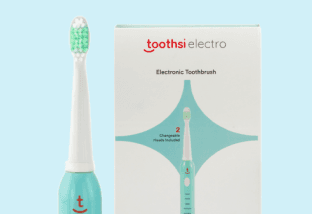
oral care products
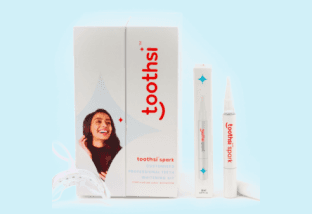
teeth whitening
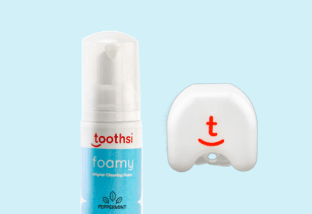
aligner essentials

laser hair reduction

dermafacial

acne treatment

hydra-facial treatment

anti ageing treatment

skincare products

Dealing with Lisp Speech :Know its types and Treatments
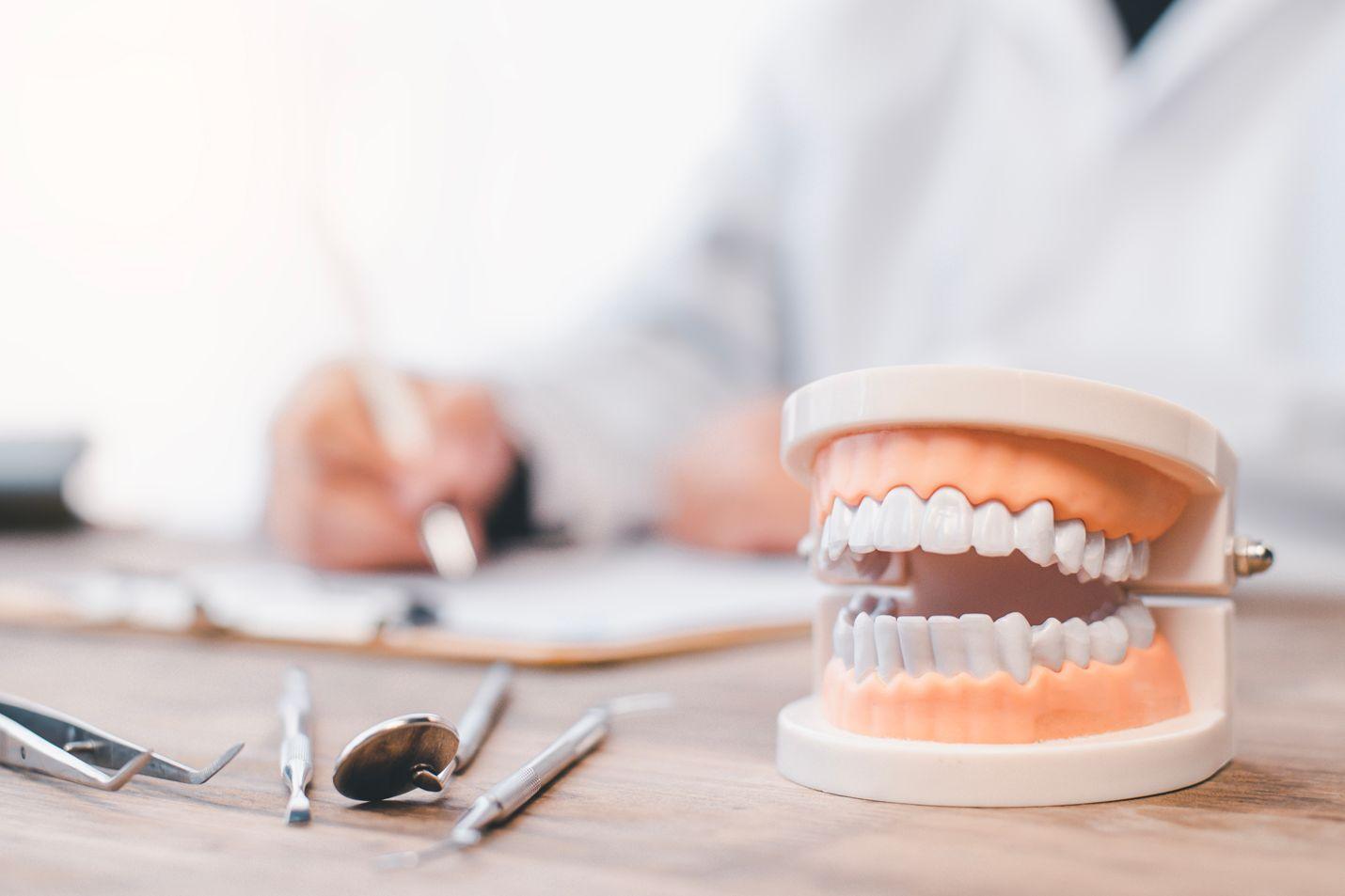
111 found this useful
share article
Having clear speech is an important part of being a confident speaker. Speech problems like lisp can significantly impact an individual's confidence and social interactions. Lisp speech can stem from various factors, including physical anomalies, neurological disorders and psychological factors. Understanding these problems is the first step towards effective solutions.
In this article, we shall talk about one of the most common speech problems- Lisp, its causes, types and treatment options. Stay tuned to the end of the blog to find out a way to permanently get rid of lisp in a non-invasive and convenient manner.
What is a Lisp?
A lisp is a speech abnormality where the individual finds it difficult to pronounce 's' and 'z' sounds, leading to unclear or distorted speech. This common speech issue can happen to anyone and can influence personal and professional interactions. Let us dive deeper into the subject and understand its causes, types and possible treatment methods.
Causes of Lisp Speech
- Developmental Issues
As children develop speech skills, they may temporarily exhibit a lisp. This is a normal part of speech development. However, if the lisp speech continues to hamper one’s communication beyond the age where speech typically stabilises (usually around the age of 4-5 years), it may reflect the need for professional help.
- Neurological Disorders
Various neurological conditions can impact the muscles and nerves involved in speech, leading to a lisp. Disorders such as cerebral palsy, traumatic brain injury or stroke can affect the control of the tongue and mouth.
- Hearing Impairments
A person who experiences hearing loss or impairments may be unable to hear certain sounds and hence find it difficult to pronounce them.
- Psychological Factors
In some cases, a lisp can be psychogenic, meaning it originates from psychological factors. Stress, anxiety or traumatic events can sometimes manifest in speech disorders like lisping, especially in adults.
Types of Lisps
- Interdental Lisp
This is one of the most common types of Lisp speech. In an interdental lisp, the tongue protrudes between the front teeth when attempting to produce the 's' and 'z' sounds, causing them to sound more like 'th'.
- Dentalised Lisp
When the tongue presses against the front teeth while pronouncing ‘s’ and ‘z’ sounds, it can be termed a dentalised lisp. This contact of teeth and tongue disturbs the airflow leading to a muffled or unclear pronunciation.
- Lateral Lisp
A lateral lisp is more complex and often considered one of the harder types to treat. In this case, the air flows over the sides of the tongue rather than directly through the middle of the mouth when making 's' and 'z' sounds. This creates a wet, slushy sound and can significantly affect speech clarity.
- Palatal Lisp
In a palatal lisp, the mid-section of the tongue comes in contact with the soft palate, or the roof of the mouth, far behind the teeth, while producing 's' and 'z' sounds. This unusual tongue placement alters the sound, often making it more muffled and less distinct.
Impact of Lisp on Communication
Having unclear speech can hinder clear communication. This can make the individual under confident in social, professional and even personal interactions. It can lead to self-consciousness, social anxiety, stage fright and impact one's overall quality of life.
Age Factor in Lisp Correction
While lisp speech can be corrected at any age, early intervention is key in correcting a lisp. While it is easier to treat in children due to their developing speech patterns, adults can also effectively address a lisp with proper therapy and dedication.
Orthodontic and Dental Solutions For Lisp
Orthodontic treatments like braces or aligners can rectify teeth alignment issues that contribute to a lisp. makeO toothsi offers clear aligners that can not only help correct lisps-associated issues but also provide you with perfectly straight and aligned teeth. You can find permanent solutions to issues like crossbite, overbite, misaligned teeth, crowded teeth or teeth crowding from the comfort of your home. The best part? These aligners are virtually invisible and impose no dietary restrictions. Head to makeO toothsi’s website to know all about how clear aligners work.
Understanding and addressing a lisp can be life-changing for effective communication and self-confidence. You can connect with makeO toothsi professionals and determine whether aligners are right for you or not. By addressing this speech impediment under expert supervision, individuals can significantly improve their communication skills and overall quality of life.
What is lisp speech?
A lisp is a speech disorder where 's' and 'z' sounds are misarticulated, affecting the clarity of speech.
What are the common causes of a lisp?
Lisp speech can be commonly caused by developmental issues, neurological disorders, physical anomalies in the mouth, hearing impairments or psychological factors.
How many types of lisps are there?
There are four main types: interdental, decentralised, lateral and palatal lisps.
Can lisps be treated in adults?
Yes, with proper speech therapy and, if needed, dental or orthodontic interventions, lisps can be effectively treated in adults.
How do dental solutions help in correcting a lisp?
Dental solutions like makeO toothsi clear aligners can rectify structural issues in the mouth that contribute to a lisp, improving speech clarity.

related categories
Other related articles.
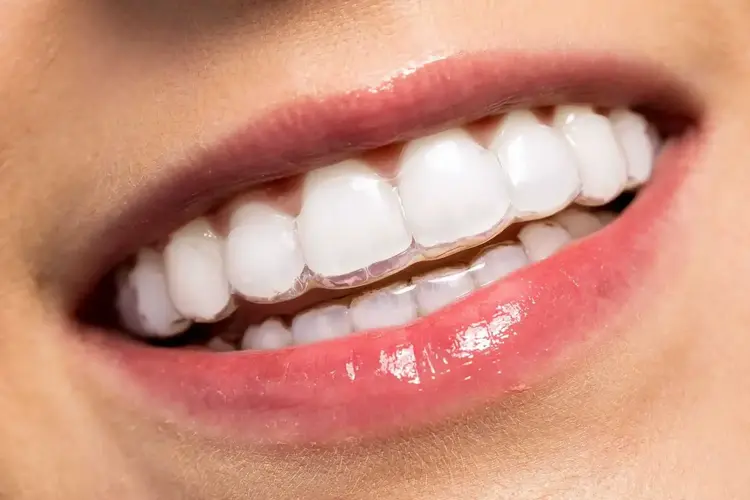
Oct 4, 2020
Types of Braces: Removable vs Fixed Braces, Which is Right For You?
2684 found this useful

Feb 22, 2021
8 Pro Tips to Get Healthy White teeth at home!
2587 found this useful

Nov 30, 2020
How do I Know I’m the Right Candidate for makeO toothsi Teeth Aligners?
2174 found this useful
download app
makeO toothsi

10 Most Common Speech-Language Disorders & Impediments
As you get to know more about the field of speech-language pathology you’ll increasingly realize why SLPs are required to earn at least a master’s degree . This stuff is serious – and there’s nothing easy about it.
In 2016 the National Institute on Deafness and Other Communication Disorders reported that 7.7% of American children have been diagnosed with a speech or swallowing disorder. That comes out to nearly one in 12 children, and gets even bigger if you factor in adults.
Whether rooted in psycho-speech behavioral issues, muscular disorders, or brain damage, nearly all the diagnoses SLPs make fall within just 10 common categories…
Types of Speech Disorders & Impediments
Apraxia of speech (aos).
Apraxia of Speech (AOS) happens when the neural pathway between the brain and a person’s speech function (speech muscles) is lost or obscured. The person knows what they want to say – they can even write what they want to say on paper – however the brain is unable to send the correct messages so that speech muscles can articulate what they want to say, even though the speech muscles themselves work just fine. Many SLPs specialize in the treatment of Apraxia .
There are different levels of severity of AOS, ranging from mostly functional, to speech that is incoherent. And right now we know for certain it can be caused by brain damage, such as in an adult who has a stroke. This is called Acquired AOS.
However the scientific and medical community has been unable to detect brain damage – or even differences – in children who are born with this disorder, making the causes of Childhood AOS somewhat of a mystery. There is often a correlation present, with close family members suffering from learning or communication disorders, suggesting there may be a genetic link.
Mild cases might be harder to diagnose, especially in children where multiple unknown speech disorders may be present. Symptoms of mild forms of AOS are shared by a range of different speech disorders, and include mispronunciation of words and irregularities in tone, rhythm, or emphasis (prosody).
Stuttering – Stammering
Stuttering, also referred to as stammering, is so common that everyone knows what it sounds like and can easily recognize it. Everyone has probably had moments of stuttering at least once in their life. The National Institute on Deafness and Other Communication Disorders estimates that three million Americans stutter, and reports that of the up-to-10-percent of children who do stutter, three-quarters of them will outgrow it. It should not be confused with cluttering.
Most people don’t know that stuttering can also include non-verbal involuntary or semi-voluntary actions like blinking or abdominal tensing (tics). Speech language pathologists are trained to look for all the symptoms of stuttering , especially the non-verbal ones, and that is why an SLP is qualified to make a stuttering diagnosis.
The earliest this fluency disorder can become apparent is when a child is learning to talk. It may also surface later during childhood. Rarely if ever has it developed in adults, although many adults have kept a stutter from childhood.
Stuttering only becomes a problem when it has an impact on daily activities, or when it causes concern to parents or the child suffering from it. In some people, a stutter is triggered by certain events like talking on the phone. When people start to avoid specific activities so as not to trigger their stutter, this is a sure sign that the stutter has reached the level of a speech disorder.
The causes of stuttering are mostly a mystery. There is a correlation with family history indicating a genetic link. Another theory is that a stutter is a form of involuntary or semi-voluntary tic. Most studies of stuttering agree there are many factors involved.
Dysarthria is a symptom of nerve or muscle damage. It manifests itself as slurred speech, slowed speech, limited tongue, jaw, or lip movement, abnormal rhythm and pitch when speaking, changes in voice quality, difficulty articulating, labored speech, and other related symptoms.
It is caused by muscle damage, or nerve damage to the muscles involved in the process of speaking such as the diaphragm, lips, tongue, and vocal chords.
Because it is a symptom of nerve and/or muscle damage it can be caused by a wide range of phenomena that affect people of all ages. This can start during development in the womb or shortly after birth as a result of conditions like muscular dystrophy and cerebral palsy. In adults some of the most common causes of dysarthria are stroke, tumors, and MS.
A lay term, lisping can be recognized by anyone and is very common.
Speech language pathologists provide an extra level of expertise when treating patients with lisping disorders . They can make sure that a lisp is not being confused with another type of disorder such as apraxia, aphasia, impaired development of expressive language, or a speech impediment caused by hearing loss.
SLPs are also important in distinguishing between the five different types of lisps. Most laypersons can usually pick out the most common type, the interdental/dentalised lisp. This is when a speaker makes a “th” sound when trying to make the “s” sound. It is caused by the tongue reaching past or touching the front teeth.
Because lisps are functional speech disorders, SLPs can play a huge role in correcting these with results often being a complete elimination of the lisp. Treatment is particularly effective when implemented early, although adults can also benefit.
Experts recommend professional SLP intervention if a child has reached the age of four and still has an interdental/dentalised lisp. SLP intervention is recommended as soon as possible for all other types of lisps. Treatment includes pronunciation and annunciation coaching, re-teaching how a sound or word is supposed to be pronounced, practice in front of a mirror, and speech-muscle strengthening that can be as simple as drinking out of a straw.
Spasmodic Dysphonia
Spasmodic Dysphonia (SD) is a chronic long-term disorder that affects the voice. It is characterized by a spasming of the vocal chords when a person attempts to speak and results in a voice that can be described as shaky, hoarse, groaning, tight, or jittery. It can cause the emphasis of speech to vary considerably. Many SLPs specialize in the treatment of Spasmodic Dysphonia .
SLPs will most often encounter this disorder in adults, with the first symptoms usually occurring between the ages of 30 and 50. It can be caused by a range of things mostly related to aging, such as nervous system changes and muscle tone disorders.
It’s difficult to isolate vocal chord spasms as being responsible for a shaky or trembly voice, so diagnosing SD is a team effort for SLPs that also involves an ear, nose, and throat doctor (otolaryngologist) and a neurologist.
Have you ever heard people talking about how they are smart but also nervous in large groups of people, and then self-diagnose themselves as having Asperger’s? You might have heard a similar lay diagnosis for cluttering. This is an indication of how common this disorder is as well as how crucial SLPs are in making a proper cluttering diagnosis .
A fluency disorder, cluttering is characterized by a person’s speech being too rapid, too jerky, or both. To qualify as cluttering, the person’s speech must also have excessive amounts of “well,” “um,” “like,” “hmm,” or “so,” (speech disfluencies), an excessive exclusion or collapsing of syllables, or abnormal syllable stresses or rhythms.
The first symptoms of this disorder appear in childhood. Like other fluency disorders, SLPs can have a huge impact on improving or eliminating cluttering. Intervention is most effective early on in life, however adults can also benefit from working with an SLP.
Muteness – Selective Mutism
There are different kinds of mutism, and here we are talking about selective mutism. This used to be called elective mutism to emphasize its difference from disorders that caused mutism through damage to, or irregularities in, the speech process.
Selective mutism is when a person does not speak in some or most situations, however that person is physically capable of speaking. It most often occurs in children, and is commonly exemplified by a child speaking at home but not at school.
Selective mutism is related to psychology. It appears in children who are very shy, who have an anxiety disorder, or who are going through a period of social withdrawal or isolation. These psychological factors have their own origins and should be dealt with through counseling or another type of psychological intervention.
Diagnosing selective mutism involves a team of professionals including SLPs, pediatricians, psychologists, and psychiatrists. SLPs play an important role in this process because there are speech language disorders that can have the same effect as selective muteness – stuttering, aphasia, apraxia of speech, or dysarthria – and it’s important to eliminate these as possibilities.
And just because selective mutism is primarily a psychological phenomenon, that doesn’t mean SLPs can’t do anything. Quite the contrary.
The National Institute on Neurological Disorders and Stroke estimates that one million Americans have some form of aphasia.
Aphasia is a communication disorder caused by damage to the brain’s language capabilities. Aphasia differs from apraxia of speech and dysarthria in that it solely pertains to the brain’s speech and language center.
As such anyone can suffer from aphasia because brain damage can be caused by a number of factors. However SLPs are most likely to encounter aphasia in adults, especially those who have had a stroke. Other common causes of aphasia are brain tumors, traumatic brain injuries, and degenerative brain diseases.
In addition to neurologists, speech language pathologists have an important role in diagnosing aphasia. As an SLP you’ll assess factors such as a person’s reading and writing, functional communication, auditory comprehension, and verbal expression.
Speech Delay – Alalia
A speech delay, known to professionals as alalia, refers to the phenomenon when a child is not making normal attempts to verbally communicate. There can be a number of factors causing this to happen, and that’s why it’s critical for a speech language pathologist to be involved.
The are many potential reasons why a child would not be using age-appropriate communication. These can range anywhere from the child being a “late bloomer” – the child just takes a bit longer than average to speak – to the child having brain damage. It is the role of an SLP to go through a process of elimination, evaluating each possibility that could cause a speech delay, until an explanation is found.
Approaching a child with a speech delay starts by distinguishing among the two main categories an SLP will evaluate: speech and language.
Speech has a lot to do with the organs of speech – the tongue, mouth, and vocal chords – as well as the muscles and nerves that connect them with the brain. Disorders like apraxia of speech and dysarthria are two examples that affect the nerve connections and organs of speech. Other examples in this category could include a cleft palette or even hearing loss.
The other major category SLPs will evaluate is language. This relates more to the brain and can be affected by brain damage or developmental disorders like autism. There are many different types of brain damage that each manifest themselves differently, as well as developmental disorders, and the SLP will make evaluations for everything.
Issues Related to Autism
While the autism spectrum itself isn’t a speech disorder, it makes this list because the two go hand-in-hand more often than not.
The Centers for Disease Control and Prevention (CDC) reports that one out of every 68 children in our country have an autism spectrum disorder. And by definition, all children who have autism also have social communication problems.
Speech-language pathologists are often a critical voice on a team of professionals – also including pediatricians, occupational therapists, neurologists, developmental specialists, and physical therapists – who make an autism spectrum diagnosis .
In fact, the American Speech-Language Hearing Association reports that problems with communication are the first detectable signs of autism. That is why language disorders – specifically disordered verbal and nonverbal communication – are one of the primary diagnostic criteria for autism.
So what kinds of SLP disorders are you likely to encounter with someone on the autism spectrum?
A big one is apraxia of speech. A study that came out of Penn State in 2015 found that 64 percent of children who were diagnosed with autism also had childhood apraxia of speech.
This basic primer on the most common speech disorders offers little more than an interesting glimpse into the kind of issues that SLPs work with patients to resolve. But even knowing everything there is to know about communication science and speech disorders doesn’t tell the whole story of what this profession is all about. With every client in every therapy session, the goal is always to have the folks that come to you for help leave with a little more confidence than when they walked in the door that day. As a trusted SLP, you will build on those gains with every session, helping clients experience the joy and freedom that comes with the ability to express themselves freely. At the end of the day, this is what being an SLP is all about.
Ready to make a difference in speech pathology? Learn how to become a Speech-Language Pathologist today
- Emerson College - Master's in Speech-Language Pathology online - Prepare to become an SLP in as few as 20 months. No GRE required. Scholarships available.
- Arizona State University - Online - Online Bachelor of Science in Speech and Hearing Science - Designed to prepare graduates to work in behavioral health settings or transition to graduate programs in speech-language pathology and audiology.
- NYU Steinhardt - NYU Steinhardt's Master of Science in Communicative Sciences and Disorders online - ASHA-accredited. Bachelor's degree required. Graduate prepared to pursue licensure.
- Calvin University - Calvin University's Online Speech and Hearing Foundations Certificate - Helps You Gain a Strong Foundation for Your Speech-Language Pathology Career.
- You are here:
- Speech disorders
How we can help people with a lisp
A lisp is a speech impediment and often results in a client having difficulty in producing the sounds ‘s’ and ‘z’. This results in the client substituting these sounds for a ‘th’ sound. This can cause communication difficulties depending upon severity and also knock a person’s confidence.
What is a lisp?
A lisp develops through incorrect placement of the tongue during speech production most commonly with the sounds of ‘s’ and ‘z’. A lisp can be categorised into the following:
A frontal lisp
A frontal lisp is when the tongue is protruding slightly through the front of the teeth. This leads to the ‘s’ and ‘z’ sounds beginning to sound like ‘th’ sounds.
A lateral lisp
A lateral lisp is when air is escaping along the sides of the tongue. This leads to speech sounding wet as the saliva can be heard as well as the sound of the speech sound.
A nasal lisp
A nasal lisp is when the entire air stream is escaping through the nose making the voice sound nasal with no air escaping through the mouth.
A strident lisp
A strident lisp is when there is a high pitched whistling sound escaping from the oral cavity due to incomplete closure of the tongue and the palate or teeth.
A palatal lisp
A palatal lisp is where the middle of the tongue touches the palate (roof of your mouth) during the ‘s’ and ‘z’ sounds.
Interdental lisp
An interdental lisp is when the tongue protrudes between the teeth during the sound production of ‘s’ and ‘z’. This leads to a ‘th’ sound instead.
What causes a lisp?
A cause of a lisp can be identified as either psychological or physiological. This is because there may be a medical reason for someone to have a lisp, or it may be more to do with stress or trauma. Although it can be categorised this way, there is no exact cause for a lisp and is more to do with habitual speech patterns when speech is developing.
What problems caused by a lisp can SLT UK help with?
Speech sound and general communication problems caused by a lisp can be improved through speech and language therapy.
By working on these areas, a client may develop coping strategies to overcome their lisp and improve the fluency of their speech. As a lisp is habitual, the more work a client can put in outside of speech and language therapy sessions, the more progress a client will make.
How does speech and language therapy help a lisp?
Speech and language therapy can improve a client’s communication skills and help them to develop coping strategies and management of their lisp. This may result in a client becoming more confident and therefore more fluent in their production of speech. A client may also be able to change the way in which they produce a certain speech sound.
Speech and language therapy can be greatly beneficial to someone who has a lisp. Speech and language therapy may reduce a patient's stress and anxiety whilst increasing their confidence. This may open up more work and social opportunities for the individual as their speech continues to improve.
What would speech and language therapy treatment for a lisp involve?
Speech and language therapy may include assessments, reports, reviews, therapy programmes, support groups, training, advice and education. Specific speech and language therapy treatment for a lisp would involve articulation therapy.
A lisp is a habitual method of speech production and can differ in severity depending upon each individual. A lisp can be either inter dental or lateral and Speech and language therapy can help an individual cope with or change the way in which they produce certain speech sounds.
If you feel you may benefit from speech and language therapy or would like any more information on our services please email [email protected] or call 0330 088 5643.
Related pages
Intensive therapy programmes.
Our speech and language therapists are trained to deliver intensive therapy programmes for individuals that require more than the core speech and language therapy support.
Worried about your communication?
If you are worried about any aspect of your speech, language and communication, do not hesitate to contact us to speak to one of our passionate speech and language therapists.
Book a free telephone consultation
We offer a free telephone consultation in order to discuss any concerns regarding your speech, language, voice or swallowing.
Phone number
Email address
SLT.co.uk Copyright 2024. All rights reserved.
Part of Tx Group
- Cambridge Dictionary +Plus
Meaning of speech impediment in English
Your browser doesn't support HTML5 audio
- speech and language therapist
- speech and language therapy
- stammeringly
- stutteringly
Examples of speech impediment
Translations of speech impediment.
Get a quick, free translation!

Word of the Day
food remaining after a meal

Simply the best! (Ways to describe the best)

Learn more with +Plus
- Recent and Recommended {{#preferredDictionaries}} {{name}} {{/preferredDictionaries}}
- Definitions Clear explanations of natural written and spoken English English Learner’s Dictionary Essential British English Essential American English
- Grammar and thesaurus Usage explanations of natural written and spoken English Grammar Thesaurus
- Pronunciation British and American pronunciations with audio English Pronunciation
- English–Chinese (Simplified) Chinese (Simplified)–English
- English–Chinese (Traditional) Chinese (Traditional)–English
- English–Dutch Dutch–English
- English–French French–English
- English–German German–English
- English–Indonesian Indonesian–English
- English–Italian Italian–English
- English–Japanese Japanese–English
- English–Norwegian Norwegian–English
- English–Polish Polish–English
- English–Portuguese Portuguese–English
- English–Spanish Spanish–English
- English–Swedish Swedish–English
- Dictionary +Plus Word Lists
- English Noun
- Translations
- All translations
To add speech impediment to a word list please sign up or log in.
Add speech impediment to one of your lists below, or create a new one.
{{message}}
Something went wrong.
There was a problem sending your report.
Donald Trump’s Bizarre Lisp During Elon Musk Interview Prompts Health Concerns
"this is daffy duck level lisping.".

What on Earth is going on with Donald Trump?
During his chat with tech billionaire Elon Musk on Monday night, Trump appeared to slur his speech and speak with an audible lisp.
The strange speech pattern had people wondering if he was suffering from any health issues or whether he had dentures that had come loose . The word dentures even started trending on Twitter during the chaotic conversation.
Video of Trump hunched over and slurring his words while doing his Twitter Space. pic.twitter.com/V0hDakkJFA — PatriotTakes 🇺🇸 (@patriottakes) August 13, 2024
Huffington Post White House correspondent SV Dáte received a spicy response from someone in Trump's camp when he inquired about his unusual speech.
"I asked the Trump campaign why the coup-attempting criminal former president is slurring his words and lisping," Dáte tweeted .
He posted a screenshot of an emailed reply that read, "Must be your shitty hearing. Get your ears checked."
AI expert Gary Marcus also broached the subject, arguing that there must be something wrong with Trump's cognitive ability.
" So we ARE just going to pretend that Trump is *not* in cognitive decline?" he wondered incredulously on X . "How’s that going to work out?"
Others resorted to making below-the-belt comments.
"This is Daffy Duck level lisping… somebody please do a wellness check on this man," one X user quipped .
Though people had some laughs at Trump's expense, this is not the first time people have noticed that Trump's speech has gotten worse as of late .
Former House Speaker Nancy Pelosi wrote in her recently published memoir that health professionals warned her that Trump's "mental and psychological health was in decline."
"I’m not a doctor,” Pelosi wrote in her book, "but I did find his behaviors difficult to understand."
As STAT recently reported , a group of speech experts said Trump was using certain verbal tics that suggested he's experienced a decrease in his cognitive function, such as rambling, and increased usage of simpler words over time, among other signs.
Of course, it could simply be a matter of old age. Trump is two years shy of being 80 years old, and that has many questioning if he has the mental fortitude to run or even assume the role of POTUS once again.
More on Donald Trump: Analysis of Trump's Speech Finds Signs of Cognitive Decline
Share This Article
Trump Has Brand-New Excuse for Why His Voice Sounded So ‘Strange’ in Musk Interview
Which is weird, because his campaign originally insisted there was nothing wrong with his voice at all.

Dan Ladden-Hall
News Correspondent

Kamil Krzaczynski/AFP via Getty Images
Donald Trump on Tuesday blamed technological issues when explaining why his voice sounded “strange” during his interview with Elon Musk .
People listening to the conversation on X on Monday night noticed that the former president sounded as though he was speaking with a lisp and that his words were slurred. When asked what was going on, a Trump campaign spokesman flat-out denied there was any issue, telling The Daily Beast: “Must be your ears.”
But everyone heard it—including Kamala Harris ’ campaign, which wasted no time pointing out that Trump was “slurring” as he rambled about climate change creating more “oceanfront property” and his intention to close the Department of Education.
Now Trump has conceded that what everyone heard was, in fact, reality.
“Unfortunately, because of the complexity of modern day equipment, and cellphone technology, my voice was, in certain areas, somewhat different and strange,” Trump wrote in a post on his Truth Social platform Tuesday. “Therefore, we have put out an actual, and perfect, recording of the conversation. ENJOY!!!”
Trump’s X account shared the updated version which Musk acknowledged has “higher quality audio.”
The weird sound of Trump’s voice appears to be just another technical issue affecting the X Spaces event. The interview was delayed by what Musk described as a “massive” distributed denial-of-service (DDos) cyber-attack (he also agreed with another user suggesting “Dems” were to blame), though X employees told The Verge no such attack took place.
The Tesla billionaire later admitted that X made “some unforced errors ourselves” with the event while thanking staffers for “fending off the attacks and fixing our mistakes.”
Last month, Musk said he “fully” endorses Trump for president despite previously supporting candidates running against Trump, including Florida Gov. Ron DeSantis. DeSantis even launched his doomed presidential campaign last year on X in an event which was also undermined by technical issues.
Trump has also had a change of heart. At a 2022 rally, he called Musk a “bulls--t artist” and also mocked him on Truth Social the same year for “asking me for help on all of his many subsidized projects” during a White House meeting. “I could have said, ‘drop to your knees and beg,’ and he would have done it,” Trump wrote .
Now, though, Trump seems to be deeply impressed with his newfound ally. “My conversation with Elon last night was heard by a RECORD audience, and was really something special, as Elon himself is very special - and I thank him for such a strong Endorsement!” he wrote in his post Tuesday.
Got a tip? Send it to The Daily Beast here .
READ THIS LIST
- UK Politics
- News Videos
- Paris 2024 Olympics
- Rugby Union
- Sport Videos
- John Rentoul
- Mary Dejevsky
- Andrew Grice
- Sean O’Grady
- Photography
- Theatre & Dance
- Culture Videos
- Fitness & Wellbeing
- Food & Drink
- Health & Families
- Royal Family
- Electric Vehicles
- Car Insurance Deals
- Lifestyle Videos
- UK Hotel Reviews
- News & Advice
- Simon Calder
- Australia & New Zealand
- South America
- C. America & Caribbean
- Middle East
- Politics Explained
- News Analysis
- Today’s Edition
- Home & Garden
- Broadband deals
- Fashion & Beauty
- Travel & Outdoors
- Sports & Fitness
- Climate 100
- Sustainable Living
- Climate Videos
- Solar Panels
- Behind The Headlines
- On The Ground
- Decomplicated
- You Ask The Questions
- Binge Watch
- Travel Smart
- Watch on your TV
- Crosswords & Puzzles
- Most Commented
- Newsletters
- Ask Me Anything
- Virtual Events
- Wine Offers
Thank you for registering
Please refresh the page or navigate to another page on the site to be automatically logged in Please refresh your browser to be logged in
How poking fun at Donald Trump’s lisp could backfire
Here we are, mocking a man for his speech impediment rather than engaging with the substance of his words. it’s a dangerous game – and completely unnecessary.

Article bookmarked
Find your bookmarks in your Independent Premium section, under my profile

Sign up for the View from Westminster email for expert analysis straight to your inbox
Get our free view from westminster email.
There is a lot to criticise Donald Trump for. You could fill books with it – people have. His policies, his conduct in and out of office, his personal behaviour … the 34 counts of falsifying business records to commit election fraud he was found guilty of this year... take your pick.
He doesn’t appear to be a very nice man. That’s just my opinion. Whichever way you slice it, there is so much juicy material to choose from when critiquing the once-and-maybe-future-president … that there really is no need to pull him up on a speech impediment.
And yet, that seems to be the takeaway from last night’s excruciatingly dull and occasionally deeply weird conversation between Donald Trump and Elon Musk , hosted on Musk’s X platform ( which, coincidentally, I used to work for ). Not the policies, not Trump’s praising of Kim Jong Un and President Putin , or his accusation that Kamala Harris (who the pair painted as radically left-wing, with very little justification) is “stealing his policies”.
The main take-away was that Trump seems to have developed a lisp, something which his campaign actively denied and his supporters pinned to audio issues. Denying reality is another strong Trump criticism — the lisp is very clearly there.
The thing is … so what? The issue is with what Trump is saying, not with the way he’s saying it. Lots of people have lisps, millions in fact. Something like 11.5 per cent of the US population has some form of speech impediment. As the old saying goes, “Donald Trump won’t hear you making fun of the way he speaks, but your friend with a lisp might”.
Those of us on the political left often pride ourselves in being the “good guys”. We think we’re better than the other side: They’re nasty. We’re nice. It’s a reductive way of looking at things — believing in trickle-down economics doesn’t make you a bad person, it just makes you (in my opinion) incorrect. You’re supposed to play the ball, not the person. And Trump’s ball is incredibly easy to boot. You don’t win by abandoning the moral high-ground and playing dirty.
Yet here we are, mocking a man for his speech patterns rather than engaging with the substance of his words. It’s a dangerous game, one that not only distracts from the real issues at hand – like Trump’s recent indictment; his showdown with Harris in November; or Musk wading in to stir the pot during the recent UK riots – but also reinforces harmful stereotypes about those with speech differences.
When we focus on superficial elements like a lisp, we’re not just being petty – we’re actively harming our own cause. It gives Trump supporters an easy out, allowing them to dismiss all criticism as personal attacks rather than substantive disagreements. It’s a gift to those who want to paint the left as elitist and out of touch.
And it’s hypocritical. Many on the left have rightly called out ableist language and discrimination. We’ve championed inclusivity and fought against stigma. To turn around and mock someone for a speech impediment – regardless of who that person is – undermines those efforts and exposes a troubling double standard.
This isn’t about being "nice" or taking the high road for its own sake. It’s about being effective. It’s about staying focused on what actually matters. When we stoop to mocking physical attributes or speech patterns, we’re not convincing anyone. We’re not changing minds. We’re just adding more noise to an already cacophonous political discourse.
There’s also a broader point to be made about the nature of political debate in the age of social media. Platforms like X (formerly Twitter) tend to reward quick, pithy responses over nuanced discussion. It’s easier to get engagement with a snarky comment about someone’s lisp than it is to dissect their policy positions. But this race to the bottom is corrosive to our political culture.
We need to be better than this. We need to challenge ourselves and others to engage with ideas, not superficialities. When Trump speaks, we should be listening to the content of his words, analysing his arguments and responding with facts and reasoned counter-arguments. There’s plenty there to work with without resorting to schoolyard taunts – and bringing ourselves down to his level.
It’s about setting a standard for how we conduct our political discourse. If we normalise mocking physical attributes or speech patterns, we open the door for that kind of behaviour across the board. Do we really want a political culture where candidates are judged more on their elocution than their ideas?
In the end, Donald Trump’s legacy won’t be defined by how he pronounces his “Ss”. It will be defined by his actions, his policies, and the impact he’s had on American and global politics and society. Those are the things we need to be talking about, debating, and yes, criticising when necessary. Anything else is just a distraction – and it’s one we can’t afford.
Join our commenting forum
Join thought-provoking conversations, follow other Independent readers and see their replies

IMAGES
COMMENTS
A lisp is a speech impediment that specifically relates to making the sounds associated with the letters S and Z. Lisps usually develop during childhood and often go away on their own.
A frontal lisp occurs when the tongue is placed anterior to the target.Interdental lisping is produced when the tip of the tongue protrudes between the front teeth and dentalized lisping is produced when the tip of the tongue just touches the front teeth. The transcription in the International Phonetic Alphabet for interdental sibilants is [s̪͆] and [z̪͆] and for simple dental sibilants is ...
A lisp is a functional speech disorder commonly called a speech impediment. A lisp is characterized by difficulty making specific speech sounds, such as /s/ and /z/. Incorrect tongue placement is the primary reason behind a lisp, resulting in difficulty articulating the /s/ and /z/ sounds. are not universally agreed upon.
The interdental lisp is a common speech impediment characterized by specific speech sounds made by the tongue protruding between the front teeth when articulating the "s" and "z" sounds, resulting in these sounds being perceived as "th.". This misplacement of the tongue directly hampers speech clarity, impacting both the speaker's ...
The lateral lisp is particularly distinctive among the various types of lisps. It occurs when air escapes over the sides of the tongue rather than directly through the middle. This results in 's' and 'z' sounds with a 'slushy' quality, making them sound less clear and more distorted. Untreated lateral lisps can contribute to speech delay ...
A lisp is a speech impediment characterized by difficulty pronouncing certain sounds, particularly the "s" and "z" sounds. It's typically addressed through speech therapy and consistent practice. A lisp can have a big impact on those affected, especially in social situations or professional settings.
Frontal (or interdental) lisp. This type of lisp occurs when a person's tongue is too far forward and pushes between the front teeth when pronouncing words containing "s" or "z.". As a result, the sound is more "th" in nature. Dentalized lisp. This lisp sounds like a frontal lisp but is caused by the tongue pressing against the ...
Speech therapists will modulate the right and wrong pronunciation to help your child identify and correct the lisp. Tongue Placement. Most lisps are caused by the incorrect placement of the tongue. Your child's speech therapist will identify the kind of lisp and then direct your child towards the right tongue placement. Drink Through a Straw.
Common causes of childhood speech impediments include: Autism spectrum disorder: A neurodevelopmental disorder that affects social and interactive development. Cerebral palsy: A congenital (from birth) disorder that affects learning and control of physical movement. Hearing loss: Can affect the way children hear and imitate speech.
There are four primary types of lisps: Frontal Lisp - This type of lisp occurs when the tongue is pushed too far forward, resulting in a "th" sound when attempting to say words with an S or Z sound in them. Lateral Lisp - A lateral lisp refers to when excess air moves over the tongue when producing S and Z sounds, which often makes it ...
Lateral lisp: This happens when a person's tongue remains in a close-to-normal position, but airflow manages to escape from one or both sides of their mouth. This is sometimes referred to as a "slushy lisp" because it can make the speaker's words sound "wet" or "spitty.". What you're hearing is a mix of air and saliva.
stroke. traumatic brain injury. degenerative neurological or motor disorder. injury or illness that affects your vocal cords. dementia. Depending on the cause and type of speech impairment, it may ...
Examples of speech impediments include stuttering, cluttering, and lisping. What Is A Lisp? A lisp is an example of a functional speech disorder. It is a condition in which the person is unable to produce certain sounds necessary for speech. Hence, those who lisp are unable to achieve clear and correct articulation.
Speech disorders, impairments, or impediments, are a type of communication disorder in which normal speech is disrupted. [1] This can mean fluency disorders like stuttering, cluttering or lisps.Someone who is unable to speak due to a speech disorder is considered mute. [2] Speech skills are vital to social relationships and learning, and delays or disorders that relate to developing these ...
A lisp is a type of speech impediment affecting the pronunciation of certain sounds. It commonly impacts how someone pronounces S, Z, or R. Lisping has no specific cause, though some factors may influence its development, including how we learn sounds, jaw alignment, pacifier use, and tongue tie. While most children outgrow their lisp after ...
However, some speech disorders persist. Approximately 5% of children aged three to 17 in the United States experience speech disorders. There are many different types of speech impediments, including: Disfluency. Articulation errors. Ankyloglossia. Dysarthria. Apraxia. This article explores the causes, symptoms, and treatment of the different ...
Explore Lisp speech causes, types and effective treatment methods. ... In some cases, a lisp can be psychogenic, meaning it originates from psychological factors. Stress, anxiety or traumatic events can sometimes manifest in speech disorders like lisping, especially in adults. ... By addressing this speech impediment under expert supervision ...
Speech language pathologists provide an extra level of expertise when treating patients with lisping disorders. They can make sure that a lisp is not being confused with another type of disorder such as apraxia, aphasia, impaired development of expressive language, or a speech impediment caused by hearing loss.
A lisp is a common type of speech impediment. An article from Speech-Language Pathology Graduate Programs specifies several potential causes of lisping: Learning to pronounce sounds incorrectly. Jaw alignment problems. Tongue-tie, where the tongue is attached to the bottom of the mouth and movement is limited.
A strident lisp. A strident lisp is when there is a high pitched whistling sound escaping from the oral cavity due to incomplete closure of the tongue and the palate or teeth. A palatal lisp. A palatal lisp is where the middle of the tongue touches the palate (roof of your mouth) during the 's' and 'z' sounds. Interdental lisp.
SPEECH IMPEDIMENT definition: 1. a difficulty in speaking clearly, such as a lisp or stammer 2. a difficulty in speaking clearly…. Learn more.
Donald Trump's Elon Musk interview sparked concern as the GOP nominee appeared to 'slur his words' with a 'lisp'. Trump reportedly opted to chat to his supporter Musk as a way for the former ...
Donald Trump spoke with a lisp and slurred his words during a virtual chat with Elon Musk, prompting questions about his health. ... Trump appeared to slur his speech and speak with an audible lisp.
Multiple people on social media believe they heard Donald Trump speaking with a lisp during his interview with Elon Musk.. The former president spoke to the CEO of X, formerly Twitter, on Monday ...
Trump's out-of-character sound wasn't the only less-than-ideal element of the Spaces event on X. The occasion itself was inaccessible to many at its scheduled starting time of 8 p.m. Eastern ...
Donald Trump on Tuesday blamed technological issues when explaining why his voice sounded "strange" during his interview with Elon Musk.. People listening to the conversation on X on Monday ...
How poking fun at Donald Trump's lisp could backfire - Here we are, mocking a man for his speech impediment rather than engaging with the substance of his words. It's a dangerous game - and ...
Donald Trump appeared to speak with a new lisp during his interview with Elon Musk on X on Monday. It is not clear whether Trump has developed a quirk in speech or whether it was as a result of ...
Voices How poking fun at Donald Trump's lisp could backfire. Here we are, mocking a man for his speech impediment rather than engaging with the substance of his words.
Trump said Musk's endorsement "meant a lot to me," and added, "Not all endorsements mean that much, to be honest. ... Trump's speech sounded as if he had a lisp or was slurring his words ...